






Special Features

Newsworthy business highlights for the year
Top SA businesswomen advocating for female empowerment

Africa Rising: Innovation and Investment in SADC
Progress in 2025, Outlook for 2026
Founder, Advocate Veerash Srikison








Special Features

Newsworthy business highlights for the year
Top SA businesswomen advocating for female empowerment

Africa Rising: Innovation and Investment in SADC
Progress in 2025, Outlook for 2026
Founder, Advocate Veerash Srikison


Transparency, dignity and respect in mediation



Real Time 24/7 online access to:
• Multi language.




• Quote effective Certification Cost Calculator.
• Application submission with REAL TIME status updates on certification progress.
• DATA captured once - is thereafter selected by means of a drop down menu for future applications.
• Globally consolidate, manage, maintain and retain your live record of all your Certified Imports & Exports with a Validated Certification history from Day 1.

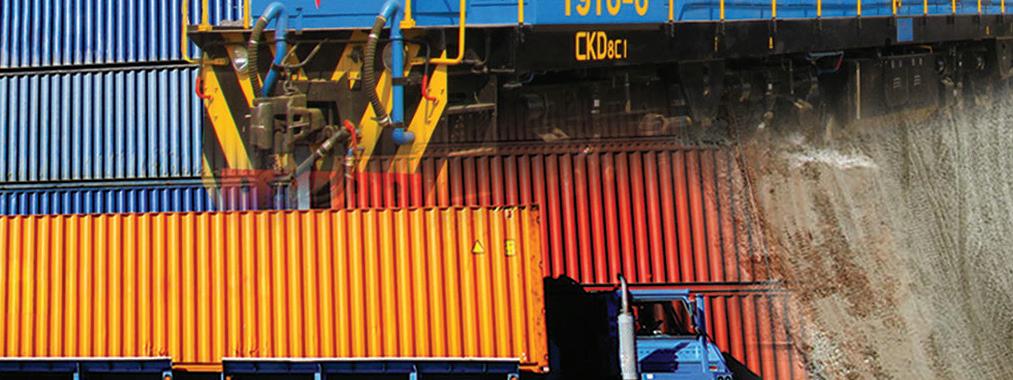












































































www.connexafricatranscom.com www.ogefremsls.com








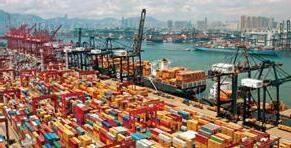



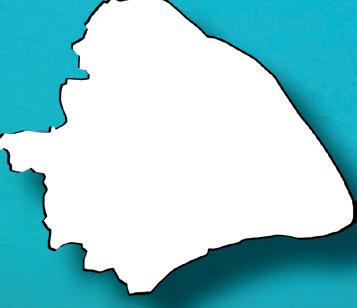

























“What good is winning a case if relationships are destroyed, employees demoralised and communities fractured?” It was this question that prompted Advocate Veerash Srikison to leave the traditional legal track in 2010 and, in 2014, to establish Fair Practice™: a dispute resolution and mediation practice that merges law, psychology and negotiation strategy. For her, building a business that placed fairness at its core was not only professional but profoundly personal—a deliberate response to the injustices of the past.
In South Africa, the provision of water services has become a crucial lifeline amid rapid urbanisation, population growth and the relentless effects of climate change. The need for resilient infrastructure and adept management of water resources has never been more urgent. Rand Water has garnered a global reputation for delivering water of the highest quality, consistently meeting and surpassing national and international standards and building large water infrastructure projects.
“A defining part of Sony’s DNA has always been our ability to innovate while staying true to our core purpose: enriching lives through technology and creativity,” says Jobin Joejoe, managing director for Sony Middle East and Africa. Under his leadership, Sony has deepened its focus on Africa, with South Africa positioned as a strategic hub.
When Aymeric d’Ydewalle stepped into the role of CEO of Saint-Gobain Africa this year, he did so with a conviction that the continent’s construction future must be shaped from within. And under his leadership, Saint-Gobain Africa is deepening its commitment to local production, sustainability and skills development through its bold movement: Make It in Africa to Build Africa.
Newsworthy South African business highlights for the year
Top South African businesswomen across six industries, advocating for female empowerment, gender equality and mentorship



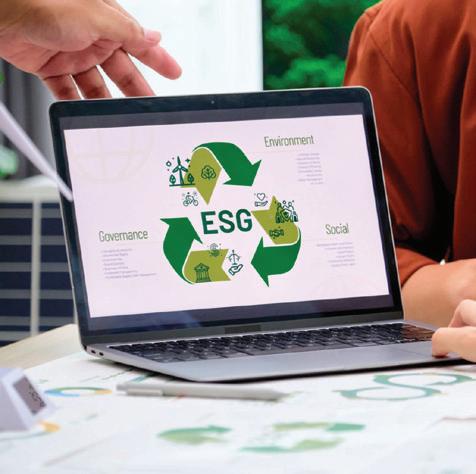





Southern Africa is fast emerging as one of the most dynamic regions in the global investment landscape, driven by a powerful convergence of innovation, entrepreneurship and cross-border cooperation. From energy transition projects to fintech breakthroughs, the Southern African Development Community (SADC) bloc is proving it can balance growth with sustainability and inclusion.
In 2025, regional economies weathered global volatility with surprising resilience, underpinned by diversification and digitalisation. Startups across sectors—from agri-tech in Zambia to renewable energy in Namibia—are attracting both local and foreign capital. Venture funding, though still modest compared to global hubs, is expanding steadily as investors recognise the region’s untapped potential and young, tech-savvy population.
Governments, too, are laying the groundwork for a more integrated and innovation-driven future. The implementation of African Continental Free Trade Area reforms is improving market access, while public-private partnerships are transforming transport corridors, energy grids and digital infrastructure. These developments are not only reducing operational costs but also connecting previously isolated economies to global supply chains. Looking ahead to 2026, the momentum is set to accelerate. Expect stronger investment inflows into green energy and critical minerals—particularly as global industries seek sustainable supply chains. Financial technology and e-commerce will continue to thrive, spurred by mobile-first consumers and supportive regulatory reforms. Meanwhile, regional innovation hubs—from Gaborone to Lusaka and Dar es Salaam—will nurture the next generation of African problem-solvers.
The SADC region’s rise is not without challenges— bureaucracy, policy inconsistency and power constraints persist. Yet, the direction is clear: A new era of smart, inclusive growth is unfolding, powered by innovation and strategic investment.
If the current trajectory holds, 2026 could well mark southern Africa’s firm step onto the global stage as a magnet for opportunity and progress.


ADDRESS: Boland Bank Building, 5th Floor, 18 Lower Burg Street, Cape Town, 8000 Tel: 021 418 3090 | Fax: 021 418 3064
Email: majdah@avengmedia.co.za
Website: www.abizq.co.za

BUSINESS QUARTERLY
PUBLISHER
MANAGING EDITOR
DESIGN
STAFF WRITER
PHOTOGRAPHIC SOURCES
PROJECT MANAGER
ADVERTISING SALES
Donovan Abrahams
Tania Griffin tania@avengmedia.co.za
Erin Esau
Matthew van Schalkwyk
iStockPhoto Courtesy Images
Lunga Ziwele
Lunga Ziwele
Viwe Ncapai
Ugo Iwunze
James Stone
Kim Jeneke
ACCOUNTS MANAGER ACCOUNTS
CLIENT LIAISON
IT & SOCIAL MEDIA
HR MANAGER
PRINTER
Benita Abrahams
Bianca Alfos
Majdah Rogers
Tharwuah Slemang
Colin Samuels
Novus Print
www.abizq.co.za, www.issuu.com
DIRECTORS
PUBLISHED BY DISTRIBUTION
Donovan Abrahams
Colin Samuels
Aveng Media

DISCLAIMER:
© 2025 African Business Quarterly magazine is published by Aveng Media (Pty) Ltd. The Publisher and Editor are not responsible for any unsolicited material. All information correct at time of going to print.

1 .
The Storyteller’s Advantage by Christina Farr (R440)
Investor, startup adviser and former business journalist Christina Farr reveals the secrets of business leaders who inspire, entertain and empathise through the art of storytelling. She offers an inside look at the greatest storytelling CEOs, whose narrative abilities enable them to raise more capital, retain more talent and make their brands more memorable.


THE
2.


3.The Diary of a CEO by Steven Bartlett (R295)
At the very heart of all the success and failure the author has been exposed to—in his own entrepreneurial journey and through the thousands of interviews he has conducted on his podcast (the UK’s no.1)—are a set of principles that can stand the test of time, apply to any industry and be used by anyone who is search of building something great or becoming someone great. These are the fundamental laws that will ensure excellence.
4.The Essence of Success by Greg Mills & Emanuele Pirro (R380)
This book finds common threads across different disciplines—sport, business, war and politics—and a consistent set of leadership attributes emerges. All these factors contribute to the achievement of success over different eras, in diverse settings, in public life as well as private business, in conflict and in the sporting arena. The book’s overall message is one of empowerment, whatever the level of your potential.


5.

Wicked Smart by Douglas Kruger (R300)
Feeding Unicorns by Jeni-Anne Campbell (R280)
Written in the margins of motherhood, meetings and midnight brainstorms, Feeding Unicorns is part manual, part manifesto, and all heart. It’s for leaders who care deeply—sometimes too deeply—and want to do things differently. From managing small teams or scaling a startup, Campbell (founder of The Good Businesswoman) offers practical tools, honest stories and a new kind of leadership playbook built on empathy, clarity and care.


Wicked Smart, The Diary of a CEO, The Essence of Success, and The Storyteller’s Advantage published by Penguin Random House SA. Feeding Unicorns published by Good Business Press.
Here is a condensation of the best brilliant breakthroughs across a range of spheres, in one easy guide. Whether you are chasing personal goals, leading teams, persuading others or are merely interested in clever ways of living the human experience, you will pick up dozens of ingenious accelerators within these pages.





In many ways, the origins of Fair Practice™ lie not in a boardroom or courtroom, but in the personal history of its founder, Advocate Veerash Srikison. Growing up as a South African Indian woman under apartheid meant fairness was never a given. Opportunities were rationed, voices were silenced and dignity was often stripped away.
“Fairness was not just a legal concept,” she recalls, “it was a human need.”
Even after 1994, when democracy promised freedom, the residue of unfairness lingered in workplaces, schools and communities. This experience left an indelible mark on Srikison. She began to see that even
in courtrooms—where outcomes were deemed ‘fair’ in legal terms— people often walked away bitter, broken and disillusioned.
“What good is winning a case if relationships are destroyed, employees demoralised and communities fractured?” she asks.
It was this question that prompted her to leave the traditional legal track in 2010 and, in 2014, to establish Fair Practice™: a dispute resolution and mediation practice that merges law, psychology and negotiation strategy. For her, building a business that placed fairness at its core was not only professional but profoundly personal—a deliberate response to the injustices of the past.
“FAIR PRACTICE MEANS EVERY VOICE IS HEARD, ESPECIALLY THOSE SILENCED BY POWER IMBALANCES. IT MEANS TRANSPARENCY, DIGNITY AND RESPECT AT EVERY STAGE.”




How Advocate Veerash Srikison and her firm Fair Practice™ are transforming dispute resolution in South Africa




Building fairness into practice Fair Practice™ is intentional. It is not a marketing catchphrase, but a philosophy—a commitment to restoring trust, dignity and balance in every sphere of society.




“Fairness,” says Srikison, “is seen in the eyes of the beholder. For one person, it may mean equality; for another, recognition; for another, dignity. Our role is to create a process that honours different perceptions of fairness while holding to the principles of justice.”








This approach has allowed Fair Practice™ to develop a portfolio of services that go far beyond what most legal firms traditionally offer. The practice operates across multiple spheres:

• grievances, executive disputes and high-stakes negotiations,
Corporate and Workplace Mediation – handling human resources grievances, executive disputes and high-stakes negotiations, often preventing costly litigation.
Family and Community Mediation – helping families and communities navigate inheritance disputes, neighbourhood conflicts and relationship breakdowns.
navigate
Educational Programmes – accredited mediation and negotiation skills training that equips professionals to resolve conflict and collaborate; introducing peer mediation in schools, teaching children to resolve disputes constructively.
children to resolve disputes constructively.
• Conflict Resolution Wellness –
Conflict Resolution Wellness – integrating counselling, trauma support and stress management into mediation services.
Each service is designed not merely to end disputes but to foster healing and restoration.

“Watching a 12-year-old say, ‘This is how I feel, and this is what I need’, is profoundly moving,” says Srikison. “It plants the seed of fairness early.”
While Fair Practice™ is often described as an ‘alternative dispute resolution’ practice, Srikison challenges the term. Mediation, she argues, is not an alternative or secondary process—it is integral to justice itself.
She points to Section 34 of the South African Constitution, which affirms that everyone has the right to resolve disputes—not only in court but also in other independent and impartial forums. For Srikison, this section validates mediation as a constitutional expression of access to justice.
“Our role is to create ancillary dispute resolution forums,” she explains, “spaces that sit alongside courts, offering impartiality, independence and humanity. Mediation is not a soft option. It is fairness in action.”
What sets Fair Practice™ apart from other legal firms is this orientation. Where traditional law often frames disputes in terms of winners and losers, Fair Practice™ focuses on people, fairness and sustainable solutions.
For Srikison, fairness is not just about outcomes—it is about the process. “Fair practice means every voice is heard, especially those silenced by power imbalances. It means transparency, dignity and respect at every stage.”
She recalls mediations where parties walked away not with everything they initially demanded but with something more valuable: a sense of being heard and understood. One participant told her, “I came demanding what I wanted, but I got what I needed— and I felt heard. I can live with this outcome.”
That, for Srikison, is the essence of fair practice. It is not perfection but balance. Not about winners and losers, but about trust restored.
Shifts in the world of mediation and HR
The last decade has seen dramatic changes in dispute resolution, and Fair Practice™ has been at the forefront of adapting to them.
Technology has revolutionised the process. Today, cross-border disputes can be mediated online, with participants from multiple countries meeting in a virtual room. But virtual mediation also demands new skills: reading body language through a screen and building trust digitally.
Regulation and compliance have grown more complex, especially for African businesses operating under tightening labour laws and governance standards. For companies, mishandling disputes is not only a legal risk—it undermines trust among stakeholders and investors.
Most importantly, workplace culture itself has shifted. Employees now demand more than salaries; they expect fairness, inclusion and well-being. This is particularly true in Africa, where histories of inequality continue to shape perceptions of justice.
At Fair Practice™, these shifts are navigated by bridging compliance with compassion. In one hybridworkplace dispute, the firm did not simply draft policies. It convened dialogue circles, trained managers and provided wellness support— ensuring not just compliance but a workforce that felt included and respected.
Has corporate South Africa embraced fair practice? Srikison believes progress has been made, but too many organisations still default to litigation or rigid HR procedures. While these may resolve issues on paper, they often escalate hostility and damage relationships.
Her advice to leaders is clear: “See conflict not as a threat but as a resource. Every dispute in your organisation is a symptom, every

dispute is information—it’s telling you something about your culture.”
She recalls a corporate client paralysed by piled-up grievances. Management blamed “difficult employees” . The real issue? Managers had never been trained in communication or conflict management. Once mediation skills were integrated into leadership training, grievances dropped and trust began to rebuild.
In today’s world, Srikison argues, fairness is not a luxury—it is a strategic necessity. Investors, employees and customers demand it. Businesses that embed fairness into their DNA will thrive.
The role of wellness in dispute resolution
Conflict takes a toll not only on companies but also on individuals. Stress, anxiety and even physical illness are common side effects of workplace disputes. Recognising this, Fair Practice™ created a Conflict Resolution Wellness division, which integrates counselling, trauma support and stress management.
“Resolution without wellness is incomplete,” says Srikison. She recalls mediating between two executives whose conflict had traumatised their teams. By including wellness sessions, not just for the leaders but for employees, the resolution was able to heal the entire team.
This holistic model—where legal, psychological and wellness elements work together—is part of what makes Fair Practice™ unique.
Psychology at the core
Psychological insight is central to Fair Practice’s approach. Most conflicts, Srikison explains, are not about money or contracts, but about deeper needs: respect, belonging, recognition.
In one mediation, a manager’s aggression was revealed to stem not from hostility but from fear— fear of becoming irrelevant in a changing organisation. By surfacing this underlying concern,
resolution became possible.
Fair Practice’s mediators are trained to listen beyond words: reading silence, tone and body language, and equipping clients with questioning techniques to uncover deeper concerns. “Many mediators are trained in procedure,” says Srikison. “We are trained in people. And that makes all the difference.”
A global perspective, a local commitment
Srikison’s reputation as a mediator extends well beyond South Africa. Her international work has confirmed that conflict is universal: People everywhere share the same needs for respect, recognition and fairness.
Yet, cultural fluency is critical. In one cross-border dispute, a breakdown arose not over contracts but over cultural expectations: one party valued relationshipbuilding, the other speed. Once these assumptions were addressed, the dispute was quickly resolved and trust built for a long-term partnership.
These experiences have deepened Srikison’s adaptability, but also reinforced her belief that global best practices must always be tailored to South Africa’s unique history and context. Here, disputes often carry the weight of apartheid’s legacy. A one-sizefits-all model imported from abroad cannot work.
At the same time, she insists South Africa has lessons for the world: The Truth and Reconciliation process, though imperfect, demonstrated the power of dialogue even after profound injustice.
the mediation room
What does this philosophy look like in practice? Srikison shares the story of two business partners whose relationship had broken down so completely that litigation seemed inevitable.
By meeting them separately at first, she uncovered not just
anger but fear: one feared financial collapse, the other feared loss of identity. By reframing their conflict in terms of needs rather than accusations, and by reminding them of their shared vision for the business, mediation transformed the situation.
They reached a new arrangement that preserved their partnership and healed their relationship— an outcome no court could have achieved.
This is the “magic” of mediation, Srikison says: the quiet shifts, the safety of confidentiality, the moment when antagonists become collaborators. “Litigation could only have given them a winner and a loser,” she reflects. “Mediation gave them a future together.”
The way forward for mediation in Africa
Looking ahead, Srikison believes the future of dispute resolution in Africa lies in mainstreaming mediation—not as an ‘alternative’ but as a constitutional and cultural right.
In many African communities, courts are inaccessible or overburdened. Mediation provides affordable, accessible solutions rooted in Africa’s own traditions of dialogue and consensus. Historically, disputes were often resolved under trees, in circles, through storytelling. Modern mediation is, in many ways, a continuation of this heritage.
But for mediation to fulfil its promise, it must be embedded into schools, workplaces and communities. At Fair Practice™, this philosophy underpins both client work and community initiatives. By equipping young people with skills of dialogue and fairness, and supporting adults with dignified processes, the firm is nurturing a culture where fairness is not an exception but a standard.
Fairness as a strategic advantage Fair Practice™ is more than a law
firm; it is a movement to redefine fairness in South African business and society. Under Advocate Veerash Srikison’s leadership, it is proving that dispute resolution, when approached holistically— with law, psychology and wellness integrated—can do more than settle disputes. It can restore dignity, rebuild trust and transform conflict into opportunity.
As Africa steps further into the global economy, companies that embrace fairness will not only retain talent and foster innovation but also reflect the continent’s spirit of resilience and ubuntu. In this sense, Fair Practice™ is not just offering a service. It is pointing to the future of leadership: one where fairness is not an aspiration but a daily practice.
“Every mediation we conduct is proof that resolution is never enough unless it restores humanity. That is the culture we are shaping for Africa’s business future,” Srikison concludes.
1
See conflict as information, not disruption
Every dispute reveals something about an organisation’s culture: whether employees feel excluded, managers lack skills, or communication is breaking down. Instead of fearing conflict, use it as a diagnostic tool to improve systems and relationships.
2
Balance compliance with compassion
African businesses face increasing regulatory pressures, but box-ticking is not enough. Policies must be paired with dialogue, inclusion and wellness support. When employees feel heard and respected, compliance becomes a culture rather than a checklist.
3
Invest in fairness as a strategic asset
Fairness is no longer a ‘soft’ value. Investors evaluate it, younger employees demand it and customers reward it. Embedding fairness into dispute resolution, leadership and workplace culture is a competitive advantage that retains talent and drives innovation.
4
Recognise the role of psychology
Most disputes are about more than contracts or policies. They are about respect, recognition and belonging. Leaders who acknowledge underlying fears and needs can resolve conflicts more sustainably and build stronger trust within their organisations.

5
Draw on Africa’s traditions of dialogue
Mediation resonates deeply with Africa’s cultural heritage of consensus-building and ubuntu. By embedding fairness into schools, workplaces and communities, leaders can build resilient organisations that reflect African values while remaining globally competitive.
WHERE TRADITIONAL LAW OFTEN FRAMES DISPUTES IN TERMS OF WINNERS AND LOSERS, FAIR PRACTICE™ FOCUSES ON PEOPLE, FAIRNESS AND SUSTAINABLE SOLUTIONS.


















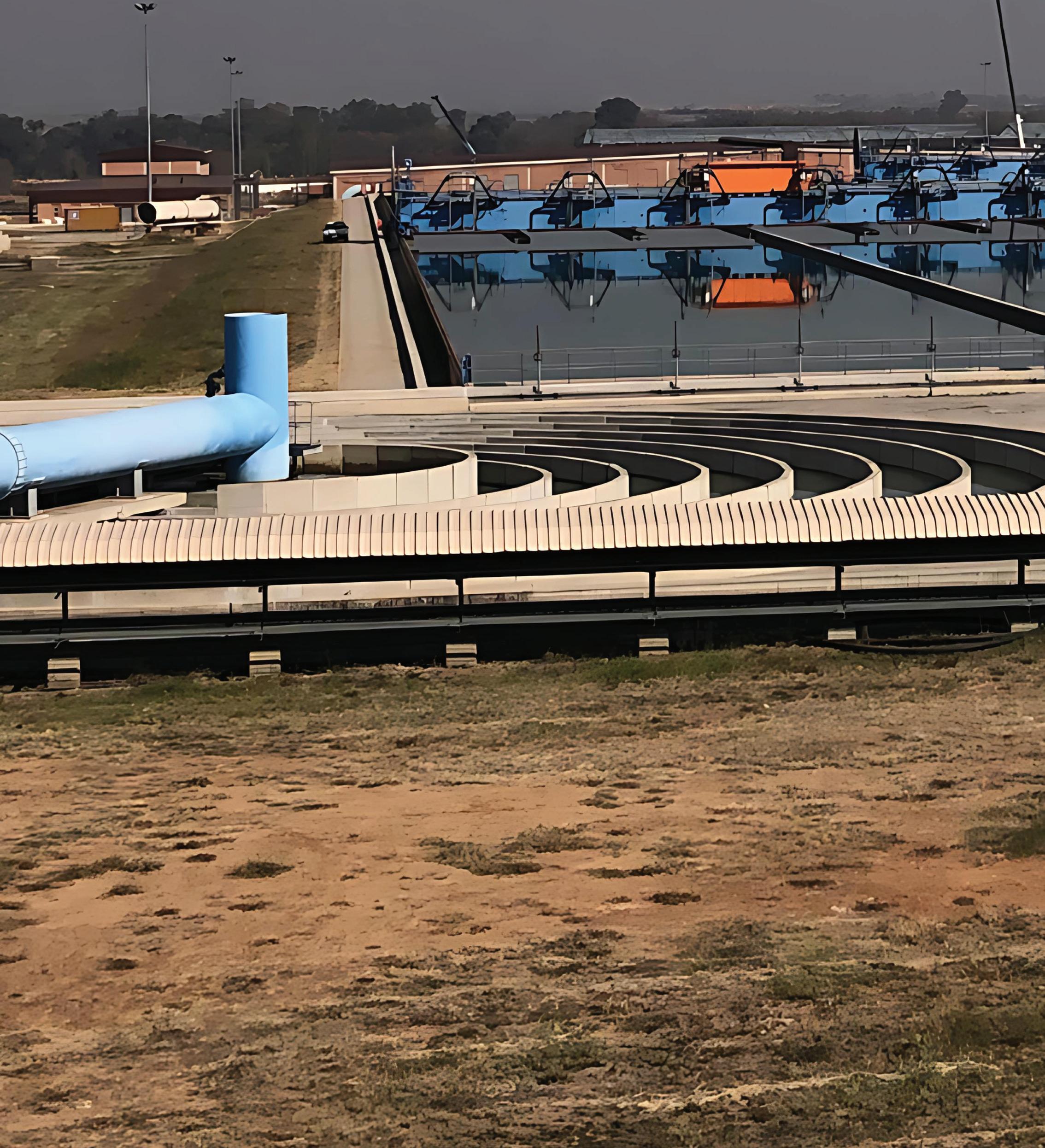








Rand Water is ensuring clean water—the foundation of life, health and economic growth—reaches every household, business and institution
n early August 2025, President Cyril Ramaphosa officiated at the launch of Station 5A at Rand Water’s Zuikerbosch Water Purification Plant in Vereeniging, Gauteng. The Zuikerbosch plant is the biggest state-of-the-art water purification plant in Africa and one of Rand Water’s key water supply infrastructures.
Valued at R4.8 billion, the project has delivered many socio-economic benefits since its inception in 2019, and construction is still ongoing.
It forms an essential part of Rand Water’s long-term infrastructure strategy, purposefully developed to accommodate and anticipate the steady increase in customer demand—ensuring a dependable and uninterrupted water supply for millions of people.
At the ceremony, President Ramaphosa said: “Let the waters that flow through this facility be a testament to our commitment to provide clean and safe water to all our people.” Rand Water
group CEO Sipho Mosai says these words capture the essence of Rand Water’s mission and the significance of this new phase of the Zuikerbosch Station 5A plant.
“This project stands as a proud symbol of our shared determination to secure South Africa’s water future. It represents not only an engineering achievement but also a commitment to service delivery, resilience and equity. Every litre purified here reflects the collective effort of government, engineers, scientists and communities

“RAND WATER’S OPERATIONAL ACTIVITIES IMPACT THE ENVIRONMENT, PEOPLE AND BROADER SOCIETY.”
working together to ensure clean water—the foundation of life, health and economic growth—reaches every household, business and institution in our region,” Mosai adds.
“At Rand Water, we remain steadfast in advancing sustainable water management and innovation. We are investing in modern infrastructure, strengthening partnerships and building the skills required to meet future challenges. This facility is more than a plant; it is a promise—a promise that we will continue to honour the trust placed in us to deliver life-giving water, now and for generations to come.”
In South Africa, the provision of water services has become a crucial lifeline amid rapid urbanisation, population growth and the relentless effects of climate change. As cities swell and the demand for clean water surges, the need for resilient infrastructure and adept management of water resources has never been more urgent.
“It is vital that society as a whole acknowledges that despite great effort, severe water challenges persist—posing a threat not only to humankind but to all species in the environment,” says Mosai. “We recognise that scaling water access is not just about building more pipes; it’s about re-imaging how things are done, financed and how outcomes are measured.”
He says Rand Water has garnered a global reputation for delivering water of the highest quality, consistently meeting and surpassing national and international standards and building large water infrastructure projects. “Immense effort has been made to ensure the maintenance of a strong financial profile amid the economic challenges and tough operating environment making liquidity and financial

risk management fundamental cornerstones toward Rand Water’s financial sustainability.”
Rand Water’s commitment to constructive engagement with its stakeholders is driven by five corporate values: innovation, excellence, caring, spirit of partnership, and integrity, he shares. “These values guide our behaviour and are meticulously applied when engaging all stakeholders. Our stakeholder interaction is also guided by the best business practice principles of inclusivity, materiality and responsiveness. Our reputation rests on the value we deliver to our stakeholders and the way we manage our contributions to, and the impact we have on, the water sector and with South Africa’s economic development agenda at large.”
Community engagement and corporate social responsibility are key elements of that. Rand Water has spearheaded initiatives that go beyond water supply and tackling broader socioeconomic challenges, aligning the organisation’s goals with national development priorities.
“Rand Water’s operational activities impact the environment, people and broader society,” says Mosai. “We, therefore, have a responsibility to reduce our negative impacts, increase our positive impacts and create sustainable benefits for our internal and external stakeholders.”
The United Nations’ Sustainable Development Goals (SDGs) aim to eradicate poverty, safeguard the environment and promote peace and prosperity by 2030. “As the provider of bulk potable water and sanitation services, Rand Water directly supports Goal 6, which aims to ensure available and sustainable management of water and sanitation for all, while other SDGs are indirectly supported through our core activities,” explains Mosai.
In line with SDG Goal 6, Rand Water provides a reliable supply of water with no unplanned interruptions to bulk supply exceeding 24 hours. It has achieved



99.70% on the water quality Composite Indicator; and continues to implement infrastructure projects to ensure transportation of safe drinking water.
Rand Water’s SDG contribution also includes Goal 5 (Gender Equality), with 43% of its employees and 76% of its managers being female; Goal 8 (Decent Work and Economic Growth), with 3 027 job created through the Rand Water Foundation and other infrastructure projects; Goal 12 (Responsible Consumption and Production), through its Project
1600 programme to improve water use efficiency; and Goal 13 (Climate Action), through ongoing improvements in its energy efficiency and reduction of its carbon footprint.
The Water Wise (waterwise.co.za) campaign, a sub-brand of Rand Water, is committed to educating and influencing stakeholders on the value of water and the importance of its conservation. Water Wise is also responsible for educating stakeholders on efficient water use, conservation and water demand management.

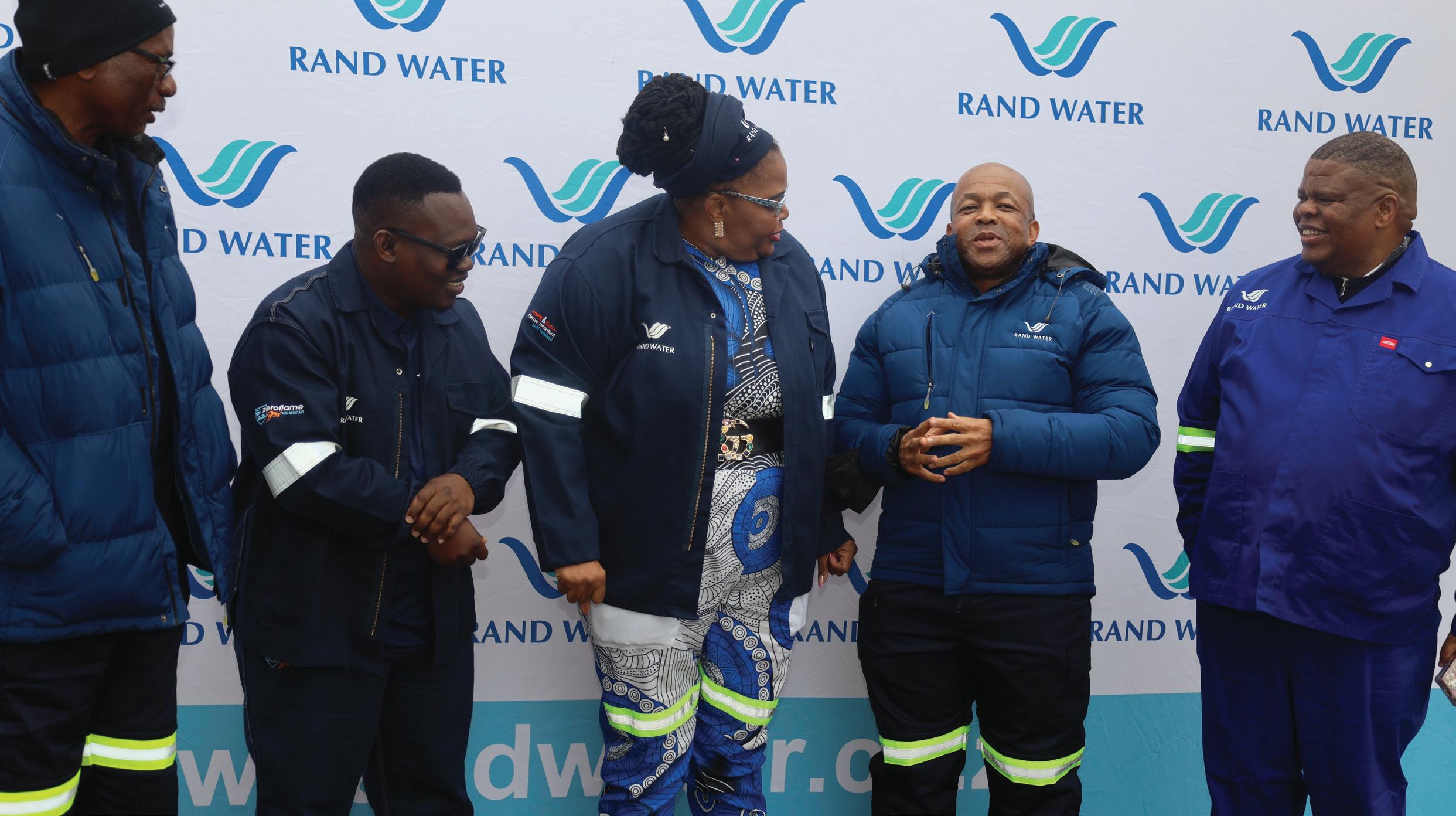
Rand Water’s Water Wise education team offers an education service to organisations at external venues to assist them with a variety of Water Wise programmes. These include educator workshops, interactive presentations, roadshows and puppet shows.
Water Wise uses interactive methodologies to promote the reduction of wasteful water use, the prevention of water pollution and the protection of water sources—aiming to create a sustainable future for all.
Mosai says Rand Water is not resting on its laurels despite its accomplishments.
“The toughest tests lie ahead with climate strain, municipal weak financial systems and non-payment of bulk water utilities.
Hard work and innovation in Rand Water’s value chain need to be used as a motivation by municipalities to reticulate the water they receive from Rand Water to taps for the benefit of communities.
“Again, to quote President Ramaphosa: ‘Water is not just a basic human need. It is the lifeblood of any thriving society. Water sustains life, supports industry, empowers agriculture and fuels innovation... Water is an enabler of economic growth.’
“The legacy we are building at Rand Water is one of resilience, innovation and inclusive water provision.”
For further information, visit www.randwater.co.za.
Established in 1903, Rand Water is Africa’s largest bulk water utility and one of the largest globally. Headquartered in Gauteng, it operates under the Water Services Act (No. 108 of 1997) and is listed as a Schedule 3B National Government Business Enterprise in terms of the Public Finance Management Act.
Owned by the South African government through the Department of Water and Sanitation, Rand Water plays a pivotal role in supplying bulk potable water to more than 18 million people across Gauteng, Mpumalanga, Free State and North West, covering an area exceeding 18 000 square kilometres.
The utility sources water from the Vaal River System, treating it at its Vereeniging and Zuikerbosch purification plants before distributing it via an extensive network of over 3 500km of large-diameter pipelines and 60 reservoirs. Its customer base includes 17 municipalities, 27 mines and nearly 1 000 industries and direct consumers.
Rand Water’s vision is “to be a provider of sustainable, universally competitive water and sanitation solutions for Africa”. Guided by strategic goals focused on energy security, financial sustainability and growth, it continues to invest heavily in infrastructure, with R34 billion allocated to capital projects over the next five years.
Recognised globally for its water quality and operational excellence, Rand Water remains a cornerstone of South Africa’s socio-economic development and regional water security.


Sipho Mosai is a seasoned leader in South Africa’s water sector and has served as Group Chief Executive of Rand Water since 2019. His appointment followed a decade as the organisation’s Chief Operations Officer, where he played a pivotal role in ensuring the consistent and sustainable delivery of bulk water to millions across the country. A scientist by training, Mosai has seamlessly transitioned into a visionary strategist, combining technical expertise with strong business acumen to guide one of Africa’s largest water utilities toward innovation and growth.
With more than 20 years of executive management and technical experience, Mosai’s career spans an impressive range of disciplines — including bulk and distribution water operations, infrastructure planning, system maintenance and refurbishment, project management, and strategic asset management. His leadership has been instrumental in driving Rand Water’s long-term infrastructure development and sectoral transformation, ensuring the organisation remains a cornerstone of national water security and socioeconomic progress.
Beyond his executive role, Mosai has contributed extensively to governance and leadership in various institutions. He has served as a non-executive and board member of several organisations, including the Construction Industry Development Board (CIDB), where he chaired the Human Resources Sub-committee and later the Audit and Risk Committee. He currently serves on the boards of the Rand Water Foundation and Rand Water Services. Widely respected for his integrity, strategic insight, and commitment to public service, Sipho Mosai continues to shape the future of South Africa’s water landscape through visionary leadership and unwavering dedication.

How Sony’s leadership in the Middle East and Africa is empowering African creators, deepening its regional presence and amplifying the continent’s rhythm through technology and storytelling
In after nearly two decades with Sony, Jobin Joejoe has witnessed the brand’s transformation across continents and product categories: a journey defined by innovation, adaptability and a deep respect for creativity. Now, as managing director for Sony Middle East and Africa, he brings that same visionary approach to one of the world’s most dynamic growth markets.
“A defining part of Sony’s DNA has always been our ability to innovate while staying true to our core purpose: enriching lives through technology and creativity,” he says. It is a legacy that stretches back to the company’s founding, when Masaru Ibuka predicted the central role artificial intelligence would one day play in electronics—a vision that continues
to guide Sony’s evolution. Under Joejoe’s leadership, Sony has deepened its focus on Africa, with South Africa positioned as a strategic hub. “South African consumers are early adopters and trendsetters across the panAfrican region,” he explains. The company’s success in the region is being driven by demand in audio and content creation, reflected in the rollout of flagship products like the Alpha 9 III mirrorless camera, the ULT Power Sound Series, and the 1000X noise-cancelling headphones.
Beyond products, Sony is investing in Africa’s creative ecosystem. Initiatives such as the Sony Creators Convention, Alpha Festival and the Sony Innovation Fund: Africa are designed to empower local talent and stimulate growth in entertainment sectors including music, film and gaming.
Joejoe recently oversaw the launch of Sony World (sonyworld.co.za), a dedicated online platform offering South Africans direct access to Sony’s full product portfolio: from televisions and home cinema systems to PlayStation. “This marks a major step in getting closer to our customers,” he says. “It allows for early access to global launches and a more personalised shopping experience.”
Looking ahead, he sees Africa’s youthful, tech-savvy population as a wellspring of innovation. “We want to help the next generation tell their stories,” he says.
Through partnerships with institutions like Open Window and initiatives like Alpha Femme, Sony is helping equip young and female creators with world-class tools. “By empowering diverse voices and enabling access to cutting-edge technology,” Joejoe concludes, “we’re building an ecosystem where creativity thrives.”
As Sony prepares to launch its new ULT Power Sound Series in South Africa, Koji Sekiguchi, Head of

Marketing for Sony Middle East and Africa, is confident the range will resonate with the continent’s passion for rhythm and celebration.
“The ULT Power Sound Series delivers massive bass and ultimate vibes—it’s about feeling the music, not just hearing it,” he says.
The launch event, set for 19 November in Johannesburg, will bring together media, influencers and consumers for an exclusive hands-on experience. “It’s a celebration of sound, energy and creativity,” Sekiguchi notes.
The entire range will also be available on Sony World, reinforcing Sony’s omnichannel presence and making it easier for consumers across South Africa to connect directly with the brand.
Sekiguchi explains that the ULT Power Sound Series was designed with Africa’s lifestyle and music culture in mind. “With genres like amapiano, bacardi, lekompo and hip hop dominating the scene, our goal was to create audio products that capture the heartbeat of these sounds,” he says.
The lineup’s standout feature—the ULT button— instantly boosts bass and sound pressure, perfect for outdoor gatherings or vibrant social settings. Durability and practicality were also key design considerations.
“We’ve incorporated IPX water- and dust resistance, long battery life, USB charging and multi-device connectivity to suit environments where power or connectivity can be inconsistent,” Sekiguchi explains.
Among the models, the ULT Field 3 and ULT Field 5 are expected to be particularly popular for their portability and robust design— ideal for beach days, braais and road trips. Meanwhile, the ULT Tower 10 will anchor home entertainment setups with lighting effects and deep, room-filling sound.
Sony is also tapping into South Africa’s thriving creative scene through local artist collaborations and influencer partnerships. “We’re engaging musicians and creators who truly understand the pulse of the audience,” Sekiguchi says. “These co-creative campaigns help showcase how our products amplify their artistry and connect with fans.”
For Sekiguchi, the ULT launch represents more than a product release—it is a cultural connection. “Music is a universal language, and in Africa it’s part of everyday life,” he reflects. “With the ULT Power Sound Series, we’re celebrating that energy: bringing people together through sound that moves them.”







































THESE OFFERS FROM SONY WILL RUN FROM 1 NOVEMBER TO 31 DECEMBER 2025





WH-1000XM6 Wireless Noise Cancelling Headphones R8 999
















































WF-1000XM5 Wireless Noise Cancelling Earbuds R4 999




















WH-1000XM5 Wireless Noise Cancelling Headphones R5 999
























WH-CH720N Wireless Noise Cancelling Headphones R1 699
WF-C510 Truly Wireless Earbuds R899











WF-C710N Truly Wireless Noise Cancelling Earbuds R1 899

WH-CH520 Wireless Headphones R649

R3 299

HT-A9000
BRAVIA Theatre Bar 9
R17 999






HT-A8000
BRAVIA Theatre Bar 8
R14 999





BRAVIA Theatre Quad + SA-SW5
R47 999
BRAVIA Theatre Bar 9 + SA-SW5 + SA-RS5
R34 999
Bundle O er:
HT-A8000 BRAVIA Theatre Bar 8 +
SA-SW3 200W Additional Wireless
Subwoofer + RS3S Total 100W
Additional Wireless Rear Speakers
R25 499
Bundle O er:
HT-A9000 BRAVIA Theatre Bar 9 +
SA-SW5 300W Additional Wireless
Subwoofer + SA-RS5 Total 180W
Additional Wireless Rear Speakers with Built-in Battery
R34 999





















































ULT TOWER 9 AC













R12 999







ULT Field 5
Wireless Portable Speaker R4 999
Bundle O er:
SA-RS3S Total 100W Additional Wireless Rear Speakers + SW3 200W
Additional Wireless Subwoofer + HTA3000 360 Spatial Sound Mapping
Dolby Atmos® / DTS:X® 3.1ch Soundbar
R20 999
Bundle O er:
BRAVIA Theatre Quad + SASW5 300W Additional Wireless Subwoofer
R20 999

Saint-Gobain Africa CEO Aymeric d’Ydewalle champions the organisation’s commitment to ‘Make It in Africa to Build Africa’
When Aymeric d’Ydewalle stepped into the role of CEO of Saint-Gobain Africa this year, he did so with a conviction that the continent’s construction future must be shaped from within. For him, Africa is not an emerging market waiting to be developed—it is a powerhouse of capability, innovation and talent.
And under his leadership, Saint-Gobain Africa is deepening its commitment to local production, sustainability and skills development through its bold movement: Make It in Africa to Build Africa (MABA).
“MABA is our deep commitment to this continent,” says d’Ydewalle. “It is an extension of our group’s purpose—Making the World a Better Home—but tailored to Africa’s unique realities and opportunities.”
A 360-year legacy anchored in local futures
Saint-Gobain’s global heritage stretches back more than three centuries to its origins as France’s Royal Mirror-Glass Factory. Over the years, it has evolved into a worldwide leader in construction materials and sustainable solutions, operating in more than 70 countries.
But Africa, d’Ydewalle believes, has the potential to shape the next chapter of that long history. “I believe deeply in Africa’s true greatness,” he says.
For more information about Make It in Africa to Build Africa, visit www.saint-gobain-africa.com.

“My commitment is to ensure we drive this movement forward—and together, as an industry, we build confidence in African capability.”
MABA: A framework built on four pillars
The Make It in Africa to Build Africa movement is centred on four pillars: Local Production, Sustainability, People & Communities, and Customer Centricity. Each pillar is intended to translate into practical, long-term actions across the continent.
“By investing in local production, we reduce dependence on imports, strengthen supply chains and ensure the materials we create are designed for African conditions and needs,” d’Ydewalle explains. “Every product we make in Africa has a multiplier effect: It builds skills, transfers knowledge and encourages entrepreneurship.”
For d’Ydewalle, the human impact matters just as much as the industrial strategy. “At its heart, MABA is about real stories of real people, real products and real projects that demonstrate Africa has the talent, resources and capacity to build for itself.”
One of the most significant developments under the

Made around the corner.
current growth strategy is the construction of a new fibre-cement manufacturing facility in Brakpan, Gauteng, set to open in 2026.
“The Brakpan facility will be our first fibre-cement plant in SaintGobain’s sub-Saharan Africa region,” d’Ydewalle shares. “This expansion reinforces our long-term commitment to the region.”
The project will create more than 60 permanent jobs in its first phase, stimulate local supply chains and make high-quality, durable building materials more accessible to the market.
“By expanding our production capacity locally, we aim to reduce reliance on imports and empower local communities,” he notes. “This development reflects our belief in the long-term potential of South Africa and the broader African market.”
Shaping a climate-resilient built environment
As Africa’s cities grow, so too does the need for sustainable and climate-resilient construction solutions. For d’Ydewalle, this is a responsibility the company takes seriously.
“In the face of climate change, it is important to consider designing for climate-resilient cities,” he says. “Our products are designed for durability and improving indoor comfort and energy performance.”
He is equally focused on building resilience into supply chains themselves. “We’re reducing our reliance on virgin raw materials to
build climate-resilient supply chains. Disruptions due to climate change impact daily wage workers the most. As manufacturers, it is up to us to ensure no one is left behind.”
Saint-Gobain’s futuRE Range, which offers locally manufactured materials with third party–verified Environmental Product Declarations, is a key result of this sustainability journey.
“With these products, we’ve reduced embodied carbon, improved resource circularity and catered to better health and safety indoors and on job sites,” he adds.
Saint-Gobain Africa’s commitment extends beyond production. The company invests heavily in skills development through training programmes for applicators, installers and contractors across the continent.
“We transfer valuable skills and knowledge that help build strong local talent pools,” says d’Ydewalle. “Our free Contractor Care Programme goes a step further by helping contractors grow their expertise in building with light and sustainable construction materials.”
These initiatives are designed to uplift communities while ensuring a skilled workforce for the future of African construction.
Leadership grounded in listening and collaboration D’Ydewalle’s leadership
philosophy is unmistakably collaborative. He engages directly with architects, engineers, contractors and distributors across Africa to understand market needs firsthand.
“I make it a priority, alongside my teams, to stay closely connected with our clients and all stakeholders across the value chain,” he says. “It’s through these meaningful interactions that we gain a deeper understanding of local needs and strengthen partnerships.”
Having worked across advanced materials, global mergers and acquisitions, and highperformance product sectors, d’Ydewalle brings a broad technical and strategic perspective to his African mandate.
“I’ve had the privilege of working across a wide range of technical market sectors,” he notes. “But when I think about MABA, the construction sector stands out. It connects directly to people’s everyday lives: homes, schools, hospitals and workplaces.”
His focus now is clear: expanding local manufacturing capacity, deepening sustainability commitments and ensuring African innovation takes its rightful place in the global construction industry.
“Our goal is not only to build materials,” he says. “It is to build confidence, capability and sustainable economic growth across the continent.”


NEWSWORTHY SOUTH AFRICAN BUSINESS HIGHLIGHTS FOR THE YEAR
Insurtech company Naked raised US$38 million (around R700 million) in a Series B2 funding round, led by global impact investor, BlueOrchard. According to coverage, this was “the largest insurtech investment in Africa to date” . Naked uses artificial intelligence (AI) and automation for underwriting, risk selection, pricing and claims processing.

Pret A Manger debuted in South Africa, with its first store opening in Johannesburg’s Melrose Arch. (A second store was opened in May 2025 at The Zone in Rosebank.) This expansion, spearheaded by the Millat Group, introduces a brand renowned for its quality, sustainability and ethical food sourcing. The South African menu features a mix of global Pret classics and locally inspired items such as a Soutvleis (Corned Beef) Sandwich.

Microsoft South Africa announced it would invest R5.4 billion in cloud and AI infrastructure in the country by the end of 2027, and contribute to skills certification for 50 000 individuals in highdemand digital skills. This latest round will enable a wide range of organisations—from startups to large multinationals and government entities—to access the cloud and AI solutions to improve operational efficiency and productivity, optimise the delivery of services and drive innovation across the South African economy.

Medtech disruptor hearX (with Futuregrowth as its largest South African institutional investor) completed a strategic merger with United States hearing aid manufacturer Eargo to form LXE Hearing, and secured a $100-million investment from Patient Square Capital to scale globally. This marked the first major merger in the over-the-counter hearing aid space since the Food and Drug Administration introduced the regulatory category in 2022.
Exxaro Resources and Eskom signed a Memorandum of Understanding that focuses on collaboration on strategic initiatives, research and projects in the areas of Carbon Emissions Reduction, Air Quality and Just Transition. The agreement focuses on jointly measuring, managing and reducing Scope 1, 2 and 3 emissions, and potentially investing in innovative technologies to drive decarbonisation. It also emphasises transition initiatives such as skills development, job creation in green sectors, and stakeholder engagement to ensure climate resilience.


MAY
Zero Carbon Charge (CHARGE), South Africa’s first company to pioneer a national network of off-grid, solar-powered ultra-fast electric vehicle (EV) charging stations, secured a R100-million equity investment from the Development Bank of Southern Africa. The funding will enable the rollout of CHARGE’s ultra-fast charging stations every 150 kilometres along all national roads. Each site is fully off-grid, powered by solar energy and supported by battery storage.
MTN Group conducted an Africa-first smartphone satellite voice trial with American satellite company, Lynk Global. The trial showed that low-earth orbit satellite technology can help bring mobile services to areas that have been hard to reach in the past. MTN was also inducted into the inaugural Brand Africa Hall of Fame “in recognition of its transformational impact on African consumers and its role in shaping a positive African narrative”
Mzansi Energy Consortium entered into a landmark 12-year power purchase agreement with Palabora Mining Company. The Marula Green Power project will be South Africa’s first grid-forming renewable energy facility, combining 132MWp of solar PV with a 360MWh battery energy storage system, and a dedicated 132kV transmission line. Mzansi Energy is implementing the system in partnership with Huawei. The facility is expected to begin operations in early 2027.
South Africa’s fastest growing solar-as-a-service provider Wetility secured a R500-million structured capital partnership with Jaltech, a leading funder of solar energy projects. The transaction marked a milestone in Wetility’s mission to provide clean, reliable and costeffective solar energy to over one million homes and businesses across the country. The capital provided by Jaltech will be utilised to fund solar and battery systems.
Vodacom finalised a 30% stake (R14 billion) acquisition in Maziv, owner of fibre assets including Vumatel and Dark Fibre Africa. The deal, following years of regulatory review, positions Vodacom to expand its fibre network and strengthen South Africa’s digital infrastructure.
Pepkor gained Competition Commission approval to acquire five Retailability brands—Legit, Style, Boardmans, Swagga and Beaver Canoe—adding 462 stores across southern Africa. The R1.9 billion deal boosts Pepkor’s adult apparel presence and enhances its sourcing, logistics and e-commerce capacity.
Checkers (part of Shoprite Holdings) introduced South Africa’s first smart shopping trolley, enabling scan-and-bag shopping, live total tracking and on-trolley payment. The pilot supports the Shoprite Group’s drive toward a seamless, tech-enabled omnichannel retail experience.


Globeleq and African Rainbow Energy reached financial close on the 153MW/612MWh Red Sands battery energy storage project near Upington—the largest standalone BESS in Africa. The R5.4 billion project will create about 250 construction and 80 operational jobs.
South African Breweries celebrated 130 years, marking its contribution to local sourcing, sustainable farming and job creation. SAB supports over 250 000 livelihoods across agriculture, manufacturing, logistics and entrepreneurship.
Nedbank was named Sustainable Bank of the Year at the African Banker Awards for its leadership in sustainable finance. It also launched ReNEW, a programme funding youth-led circular economy businesses to create jobs and reduce climate impact.
Yoco was listed among CNBC and Statista’s Top 300 Fintech Companies worldwide—the only South African firm recognised—for its role in digital payments for small businesses.
LIV Golf announced Steyn City, Johannesburg, as host of the first LIV Golf South Africa in March 2026, a multi-year, multi-million-rand event to be played on its acclaimed Nicklaus Design championship course.


ADvTECH launched Emeris, a new private higher education brand uniting Varsity College, Vega School and MSA under one name. The move strengthens ADvTECH’s ability to meet evolving student and industry needs, supported by a R420-million state-of-the-art campus in Sandton, Johannesburg.
Sasol marked its 75th anniversary and a return to profit for the 2025 financial year, driven by cost controls and one-off gains. From its pioneering coal-to-liquid roots in Sasolburg, the company has grown into a lasting symbol of innovation and resilience.
MultiChoice Group became part of CANAL+ , after the international media and entertainment group secured ownership of about 94% (valued at around $3.2 billion) of the South African company. CANAL+ aims to strengthen its position as a leading media and entertainment player across Africa—a continent rich in diversity and opportunity.
Prosus, majority-owned by Naspers, completed its €4.1 billion tender offer for Just Eat Takeaway.com, gaining access to over 60 million customers and 362 000 restaurant partners . The acquisition will help strengthen Prosus’s position in global food delivery, combining scale and technical expertise to enhance customer experience and create value for partners and shareholders.
Harmony Gold celebrated 75 years of responsible and inclusive mining while finalising its $1.08 billion (R19 billion) acquisition of MAC Copper , owner of the high-grade CSA Copper Mine in Australia. The transaction— funded through cash and debt—expands Harmony’s international footprint and diversifies its mineral portfolio.
West Wits Mining achieved a major milestone by bringing its first underground ore to surface from the Qala Shallows gold project in the Witwatersrand Basin—South Africa’s first new underground gold mine in 15 years. The project is expected to create 1 000 direct jobs and introduce greener mining practices, including solar power and battery-operated machinery.

store’s product offering would be largely sourced from local suppliers, complemented by a curated selection of global brands. Walmart also announced it would launch a mobile app to allow South Africans to shop online from its first branded stores in the country
In a boost for youth entrepreneurship, the Youth Employment Service (YES) launched the Gamechangers Challenge , an initiative linking promising young entrepreneurs with corporate supply chains and offering R300 000–R2 million in funding to help scale their businesses.

Growthpoint Properties announced a strategic investment in developing the Cape Winelands Airport precinct, envisioned as a next-generation aviation, industrial and hospitality hub. Located on the site of the former Fisantekraal airfield, the project aims to bolster logistics, trade and tourism infrastructure in the Western Cape.
Massmart—owner of Game, Makro and Builders— revealed it would be opening its first Walmart store in South Africa in Clearwater Mall, Johannesburg. The

TymeBank announced a rebrand as it undergoes a series of changes—set to change its name to GoTyme in the first half of 2026. In addition, the bank would be partnering with Sanlam to create a co-branded super app that consolidates a variety of financial services (from digital banking and payments to airtime, data purchases, bill payments and credit) into a single, seamless digital platform.
SPAR Health took a major step forward with its acquisition of Aptekor Group, a leading Western Cape pharmaceutical wholesaler. The move strengthens the Pharmacy at SPAR network—now at 125 stores, with plans to grow to 250 nationwide in the next three years.
South Africa’s removal from the Financial Action Task Force (FATF) grey list marked a significant milestone, reflecting strong reforms to combat financial crime. The decision is expected to lower transaction costs, boost investor confidence and make doing business in South Africa easier, especially in the financial and investment sectors.











TOP SOUTH AFRICAN BUSINESSWOMEN ACROSS SIX INDUSTRIES, ADVOCATING FOR FEMALE EMPOWERMENT, GENDER EQUALITY AND MENTORSHIP

In South Africa’s energy sector—still largely male-dominated—Mahlanyane is proving what determination, skill and purpose-driven leadership can achieve. As Coal & Civil Maintenance line manager at Eskom Holdings SOC Ltd, she has risen through the ranks from apprentice technician at Hendrina Power Station to one of the utility’s respected technical leaders. Beyond her engineering responsibilities, Mahlanyane is a passionate advocate for gender equity and community empowerment. She is an active champion of Eskom’s Women Advancement Programme, which supports the professional growth of women across the organisation’s technical fields. Her advocacy extends beyond the power station gates. Mahlanyane spearheaded a sanitary towel donation drive for local schools—an initiative that has improved attendance and dignity for girls in underserved communities.
Featured among Africa’s 20 Under 40 Energy Women Rising Stars in 2025, Mahlanyane continues to inspire a new generation of women entering science and engineering. Her example demonstrates that leadership in energy is no longer defined by gender but by commitment, competence and communityminded purpose.





Nell has steadily carved out a role at the intersection of sustainable development and gender inclusion, bringing both purpose and pace to South Africa’s evolving energy economy landscape. As founder and executive director of Estahale Advisory, she advises investors and host communities on ESG, stakeholder engagement and the transition to low-carbon growth.
Her early career in renewable energy consultancy has helped shape her deep conviction that women’s empowerment is not simply a checkbox but a strategic lever in transforming high-impact industries. For example, she was selected as one of the “Next Generation Women Leaders” by McKinsey & Company in 2020, recognising her leadership potential and commitment to inclusive growth.
Nell has leaned into mentoring and capacity building, particularly in rural and underserved communities, aligning her advisory work with themes of skills development, gender equity and meaningful economic participation. Her participation in the “Energising Women to Advance the Energy Transition in the SADC region” mentoring programme further underscores her efforts to amplify women’s voices in a male-dominated sector.
Mbanga is making waves in South Africa’s energy transition—not just for her technical leadership but for her strong advocacy of women, youth and inclusion in the sector. At the age of 35, she holds the role of programme/ project manager at the South African National Energy Development Institute (SANEDI).
Crucially for gender equality and mentorship, Mbanga serves as vicechairperson of the South African Association for Females in Energy Efficiency (SAFEE). In that capacity, she drives awareness-raising, peer mentorship and network building for women in energy. She also publicly affirms that mentoring young talent is central to her work: through SANEDI’s internship programme and through commissioning young and female entrepreneurs in procurement processes.
In a sector where women remain under-represented, Mbanga’s dual focus on energy efficiency policy and inclusive leadership offers a template for change—proving that advancing the clean energy transition and advancing gender equity are not separate agendas, but complementary ones.




Hudson brings more than 18 years of experience in energy and finance to her role as head of Project Finance at Scatec South Africa, where she leads the structuring and execution of complex renewable energy deals across the region.
She uses her position not only to deliver commercial outcomes but also to champion inclusivity and mentorship. She has helped create informal ‘coffee sessions’ and a women’s forum where female professionals in renewable energy finance and project development share challenges, progress and strategies.
Hudson is particularly passionate about facilitating mentorship, networking and honest dialogue so that women feel empowered to claim technical finance roles. Her message to the next generation: “Trust your intuition, prepare your voice and remember that you bring multidimensional talent to the table.”
Her blend of technical finance mastery and advocacy for gender-balanced leadership is reshaping how renewable energy deals are financed in southern Africa—and who gets to sit in those rooms.
Mokoena
As executive vice-president for Human Resources and Corporate Affairs at Sasol, Mokoena has become one of South Africa’s most consistent voices for gender equality, inclusion and mentorship in the corporate sphere. She has spearheaded initiatives that place people and purpose at the centre of the company’s transformation journey. Through programmes such as Bridge to Work, Mokoena has helped equip women and youth with the critical skills needed to participate in the energy transition, while ensuring Sasol’s ‘just transition’ efforts translate into tangible community upliftment. She also mentors young professionals, many of whom have gone on to achieve senior roles in their own right—a testament to her commitment to nurturing talent.
In public dialogues and her own social platforms, Mokoena consistently challenges peers to foster workplaces where diversity, equity and belonging are lived values. “We must move from conversation to action,” she says, echoing her call for South African corporates to accelerate inclusion.





Mabhena-Olagunju, founder and CEO of DLO Energy Resources Group, stands among South Africa’s most influential business leaders driving both the energy transition and gender transformation in industry. For her, ownership is power—and ensuring women have a stake in renewable energy projects is essential to changing the narrative of who leads Africa’s green future. Through the DLO African Women in Leadership Summit and targeted mentorship initiatives, she has created spaces for women to connect, learn and access opportunities across STEM and infrastructure industries. The company also provides bursaries and training for female engineering students, helping build the next generation of energy professionals.
Mabhena-Olagunju speaks passionately about representation and inclusion, noting that women must “see themselves in spaces where they don’t normally see people who look like them.” Her advocacy blends purpose with performance— proving that transformation and excellence are not competing ideals but complementary drivers of sustainable progress.
Johnston, CEO of Edge Growth Ventures, is a leading voice in South Africa’s investment landscape—and a passionate advocate for gender equality and women’s economic empowerment. She has helped unlock growth for small and medium-sized enterprises (SMEs), while championing the visibility and advancement of women within the financial sector.
As chairperson of 100 Women in Finance South Africa, Johnston has been instrumental in expanding mentorship and networking opportunities for women across the investment value chain. Her leadership in this space has provided a platform for women professionals and entrepreneurs to connect, learn and thrive.
She continues to advocate for the removal of systemic barriers that hinder women entrepreneurs’ access to funding, insisting that gender equity in finance is not only a moral imperative but a strategic one.
Johnston exemplifies how finance can be a powerful lever for empowerment— transforming not just businesses but the broader narrative of women’s participation in South Africa’s economy.





Kekana, CEO of Royal Bafokeng Holdings (RBH), has become a defining figure in South Africa’s corporate transformation landscape—not only for her strategic acumen but also for her unwavering commitment to women’s empowerment and inclusive leadership.
Kekana has cultivated a corporate culture where representation and merit go hand in hand. Her focus on developing female talent and mentoring emerging leaders has created a pipeline of women prepared to take on senior roles across sectors traditionally dominated by men.
In 2024, she was honoured as the Fearless Thinker at the Gender Mainstreaming Awards, celebrating her leadership in embedding equality as a business imperative rather than a compliance exercise.
Beyond RBH, Kekana uses her platform to encourage women to lead with purpose, courage and conviction—reminding them that “our stories, our decisions and our presence shape the future of African business.”
Nicolette Mashile, better known to her audience as “The Financial Bunny”, has become a formidable voice in South Africa’s fi nancial literacy and empowerment movement. As founder of the Financial Fitness Bunnies agency and creator of the Financial Bunny brand, she charts a clear mission: make financial education accessible, engaging and relevant—especially for those who have historically been left out.
Mashile’s Financial Bunny School targets learners and young adults with tailored workshops and resources. She has also taken public-facing advocacy roles. She articulates the view that inclusive financial education is essential for social equality, especially for women who often face systemic barriers in wealth building.
Her reach is real: Recognitions include being featured among Brand South Africa’s 30 Voices of the Future, and her content agency winning accolades such as a Gold PRISM podcast award.
In essence, Mashile is far more than a content creator or influencer; she’s a social entrepreneur using storytelling, education and empowerment to shift the financial narrative for women, youth and underserved communities in South Africa.




Moosajee is a South African civil engineer turned serial social entrepreneur whose career is defined by building pathways for women and girls in STEM, technology and entrepreneurship across Africa. She co-founded WomEng (Women in Engineering) and served as CEO of the organisation, which develops female engineering talent in multiple countries.
She also co-founded WomHub: an innovation ecosystem and co-working/ incubator platform for female founders in STEM, technology, mining and manufacturing. She has helped reach more than 150 000 women and girls across 30+ countries.
Her most recent venture, CybHERfence (a spinoff of WomHub), addresses cybersecurity vulnerabilities affecting women entrepreneurs and innovators.
She also uses her voice on global platforms, serving on the World Economic Forum Global Future Council on Gender, Education the Future of Work, and as co-chair for B20 task forces on women empowerment.
In sum, Moosajee is not only transforming the gender dynamics of engineering and tech in southern Africa; she’s building the ladder, the network and the platform that enable more women to climb it.
Baratang Miya is a South African tech social entrepreneur dedicated to advancing women’s empowerment and digital inclusion in ICT and STEM. As founder and longtime CEO of GirlHype (Women Who Code), she has spent over two decades equipping young women from underrepresented communities with coding, web development and tech entrepreneurship skills.
Beyond training, Miya advocates for tackling structural barriers facing women in tech—access, representation, resources and confidence. Through mentorship, global partnerships with organisations like UN Women and the Mozilla Foundation, and community-led workshops, she has helped build a more inclusive tech ecosystem.
Her message is simple yet powerful: when women gain digital literacy, access and opportunity, they become creators of the digital future—not just consumers of it.





Charnley is a transformative force at the intersection of business leadership, social entrepreneurship and women’s empowerment in Africa. As CEO of Smile Communications (formerly Smile Telecoms) and a former president of the International Women’s Forum South Africa (IWFSA), she brings decades of experience in union advocacy, corporate restructuring and telecommunications innovation—all fuelled by a deep commitment to inclusion, mentorship and economic justice.
In her IWFSA role, Charnley has actively championed mentorship and leadership development for women. She has publicly emphasised issues such as gender pay parity, women’s economic empowerment and leadership pipelines for women of colour.
Among her many recognitions is the 2023 AWCA “Woman of Substance” Award, reflecting her continuous dedication to creating structural change for women in Africa.
Through her board roles, telecoms innovation and advocacy for gender equality, Charnley is creating pathways for women to lead, influence and thrive.
Naidoo is a dynamic force in South Africa’s entrepreneurship and innovation ecosystem, serving as CEO of YIEDI (Youth Innovation Entrepreneurship Design Institute) and founder of WomX Women in Business. She has made a point of championing women entrepreneurs and advancing gender equity through meaningful mentorship and market access initiatives.
Through WomX—established in 2023—she spearheaded a national platform dedicated to elevating women-led businesses by offering structured accelerators, free online learning (the Entrepreneurship Academy), and networking events (WomX Connect). Under her leadership, WomX has already brought together a network of more than 2 000 women entrepreneurs and supported dozens of women-owned businesses through its accelerator and mentorship programmes.
By linking YIEDI’s innovation and incubation capabilities with WomX’s gender-focused mission, she creates an ecosystem where women aren’t just supported—they’re scaled.
Naidoo’s work has touched everything from narrative shaping (via the Her Story, Her Success book featuring 100 women founders) to hands-on mentorship and business acceleration sessions.





Gqomo is an award-winning South African social entrepreneur and the founder of the Womandla Foundation, a non-profit organisation dedicated to mentoring, STEAM (science, technology, engineering, arts & mathematics) education, entrepreneurship and development for women and girls across Africa.
She established Womandla with the stated mission of educating, equipping and empowering women and girls through structured mentorship, entrepreneurial training and career development.
She was named among News24’s 100 Young Mandelas in 2023 for humanitarianism; a winner of the Mail & Guardian Power of Women 2022 in the “Guiding Woman” category for gender equality and sustainability; and a JCI South Africa TOYP Honouree (Outstanding Young Person) 2023 under Voluntary Leadership.
In an interview with Glamour South Africa, Gqomo spoke candidly about transformation, agency and leadership: “This is my duty, purpose and role as the director of a women’s organisation to promote it, live it and support other women in all endeavours.”
As managing director of redAcademy, Hawkey is redefining how young South Africans—particularly women—enter and thrive in the technology industry. With a clear focus on bridging the digital divide, she has built an organisation that transforms lives by creating pathways into sustainable, high-impact tech careers.
Hawkey’s mission goes beyond technical education. She is an outspoken advocate for women in technology, regularly highlighting the need to address systemic barriers that keep women under-represented in coding, data and engineering fields.
In interviews, she has spoken candidly about the gender imbalance in tech: “We need to shift the narrative from women being consumers of technology to becoming the creators of it.”
Her approach to empowerment is practical: equipping women with digital skills that translate directly into employability and leadership. By combining academic rigour, mentorship and real-world experience, she is ensuring inclusion becomes a measurable outcome, not a slogan.




In an industry historically dominated by men, Nkomo and Milanzi, cofounders of Tshepa Basadi Group, are proving that women can not only participate but lead with purpose and impact. Founded in 2018, Tshepa Basadi—meaning “Trust Women” in Setswana—is a 100% black femaleowned engineering, procurement and technical services company that has become a symbol of empowerment and excellence in South Africa’s mining and construction sectors.
Milanzi, a supply chain strategist by training, has been vocal about the power of procurement to drive gender equality. In her essay, “Women in Mining: Project Procurement as a Strategic Lever for Women Empowerment,” she argues that every procurement decision represents an opportunity to uplift women-owned enterprises and shape a more inclusive economy.
Nkomo, an experienced project management specialist, focuses on visibility and representation, ensuring women occupy spaces traditionally reserved for men.
Tshepa Basadi continues to model a future where women are not tokens of transformation but architects of industry.
As CEO of Kumba Iron Ore, Zikalala stands at the forefront of South Africa’s mining leadership—not only as a seasoned executive but as a passionate advocate for women’s empowerment and gender equality in one of the country’s most male-dominated sectors.
In 2023, she served as the campaign ambassador for the International Day of Women in Mining, amplifying global conversations about advancing women and youth in the mining sector. Under her influence, Kumba Iron Ore has continued to strengthen its diversity and inclusion agenda, investing in programmes that develop female talent and improve workplace equity.
As a member of the International Women’s Forum South Africa, she uses her platform to mentor emerging women leaders and advocate for structural inclusivity across industries.
By combining operational excellence with purpose-driven leadership, Zikalala has redefi ned what it means to lead in mining—proving that empowerment and performance can, and must, co-exist for sustainable growth.





Naidoo, CEO of The Particle Group and chairperson of Women in Mining South Africa (WiMSA), stands at the forefront of advancing gender equality, mentorship and structural inclusion in South Africa’s mining sector. Her dual leadership roles allow her to steer both business growth and transformation agendas simultaneously.
In her capacity with WiMSA, she has used her voice and influence to insist on meaningful change in a traditionally male-dominated industry.
Naidoo’s advocacy stretches beyond statements: She has spearheaded programmes under WiMSA that promote mentorship, STEM training, career path visibility for women and supplier diversity initiatives within mining service providers.
By blending executive leadership with an unwavering dedication to empowerment, Naidoo exemplifies a new generation of industry leaders who view diversity as both a moral imperative and a growth lever. Her efforts are helping open the shaft for women in mining—pulling them not just into roles but into leadership.

Maphefo Anno-Frempong serves as CEO of the Transport Education Training Authority (TETA) in South Africa, where she combines a deep background in skills development, enterprise empowerment and stakeholder engagement with a strong commitment to advancing women and youth in the transport sector.
Under her tenure, TETA has launched gender-responsive training programmes, increased women’s participation in transport-related skills development, and supported dedicated forums and mentorship platforms for women in transport.
Anno-Frempong has also driven strong partnerships for empowerment. For example, TETA partnered with the EmpowaWomen in Transport Summit and other networks to deliver workshops, masterclasses and networking opportunities for women in transport and logistics.
Maphefo Anno-Frempong is not only leading a major Sector Education & Training Authority but also championing an agenda of gender inclusion and mentorship—ensuring women are not only present in transport but positioned to lead and shape its future.




As founder and CEO of BBOpEx Solutions, Maitin stands out as one of South Africa’s most dynamic champions for transformation in logistics, transport and supply chain management. Her company is more than a consulting firm; it is a platform for developing people, empowering women and reshaping the face of an industry still marked by gender imbalance.
Her real passion lies in empowering women and youth. This commitment earned BBOpEx recognition as a finalist in the Accenture Gender Mainstreaming Awards in the “Investing in Young Women” category—a nod to the company’s ongoing mentorship and development programmes.
In partnership with the Chartered Institute of Logistics and Transport South Africa, Maitin has led initiatives that promote education, training and work-readiness opportunities, particularly for young women entering the logistics and freight sectors.
She continues to build bridges between operational excellence and inclusive growth—proving that advancing women in logistics is not just about equality but about unlocking South Africa’s full potential in the global supply chain.
With over two decades of experience in logistics and operations, Naicker— director at SAPICS and respected supply chain professional—is a leading advocate for women’s empowerment and professional development in the industry. She has dedicated her career to ensuring women have equal access to the skills, mentorship, and leadership pathways needed to excel in supply chain management.
As a board director of SAPICS, South Africa’s professional body for supply chain management, she shapes initiatives that elevate and empower individuals across the logistics and manufacturing sectors. She plays a key role in Women in Supply Chain programmes, mentorship forums, and capacitybuilding workshops, helping women acquire both technical and leadership competencies in a rapidly evolving global industry.
Naicker has also hosted Women’s Empowerment Masterclasses, focusing on leadership, resilience, and self-advocacy in traditionally male-dominated environments. Through her work, she inspires the next generation of supply chain professionals to see the field not just as a career, but as a platform for transformation and impactful leadership.




Selesho is a dynamic entrepreneur making waves in South Africa’s logistics sector—particularly as a champion for women’s advancement and inclusive industry leadership. She is the founder and director of Themba Liyeza Solutions, a company engaged in trucking, shuttle services and plant hire.
Operating in a male-dominated industry, she navigated significant obstacles: from limited funding access to structural bias. Today, her business employs local talent and supports subcontractors and women-led service providers, thus creating ripple effects of empowerment in her community.
Beyond her operations, Selesho serves as general-secretary of International Women in Transport, a non-profit organisation dedicated to organising, supporting and representing women across all sub-sectors of transport. In this capacity she promotes mentorship, visibility and strategic opportunity for women in logistics and transport.
Selesho is not just advancing logistics—she is redefining what leadership and empowerment look like in transport.
Calmeyer is the founder and CEO of ROAR AFRICA, a luxury safari company rooted in Africa and passionately oriented toward women’s empowerment and conservation: “If African women rise, wildlife will thrive.”
Approximately 85% of its operations team are women, many occupying roles traditionally dominated by men: guides, rangers, pilots and anti-poaching units.
Beyond staffing, she has created dedicated platforms for mentorship and empowerment. She launched annual Women’s Empowerment Retreats: luxury safari experiences featuring women change-agents in Africa, bringing inspiration, exposure and networks to women participants.
In Calmeyer, we see a leader who blends business success, social purpose and gender equity advocacy. She demonstrates that luxury, conservation and women’s empowerment are not separate agendas—they can co-exist and amplify one another.





Kim Whitaker
Entrepreneur, mentor and change-maker, Whitaker has become a defining voice in South Africa’s responsible tourism movement. As co-founder of Once Travel backpackers’ hostels and Khwela Academy, she is blending profit with purpose, and ensuring women and youth have a real stake in the industry’s growth.
It’s her work through Khwela (meaning ‘to climb’) Academy that truly reflects her passion for empowerment. The academy trains and mentors young women from underserved communities for careers in tourism, equipping them with professional and personal development skills to thrive in management and entrepreneurship. Many of its graduates now work in top hotels, tour companies and hospitality startups across the country.
`Her approach merges education, social enterprise and mentorship—ensuring empowerment translates into measurable outcomes. Her achievements have earned her recognition from the World Economic Forum’s Global Shapers and the Mail & Guardian Top 200 Young South Africans.



SOUTHERN AFRICA’S ESG YEAR IN REVIEW: MOMENTUM, MARKETS AND THE HARD WORK AHEAD






In 2025, southern African corporates pushed ESG (environmental, social & governance) from boardroom aspiration into measurable action. After years of pledges, this was the year many companies began to translate targets into finance, pilots and measurable outcomes— while regulators, financiers and communities raised the bar on accountability.
The result is a patchwork of clear successes, stubborn gaps and a pragmatic recognition that decarbonisation here will be incremental, capital-intensive and locally specific.
Corporates kept faith— and some delivered Large listed miners and industrial groups continued to dominate the ESG headlines, but not always in the way critics expected. Anglo American, for example, repeatedly framed Africa as core to the global energy transition, repositioning its footprint toward copper and other critical minerals while shedding thermal coal and other legacy assets. That shift reflects a broader industry recalibration: Miners are increasingly pitching themselves as vital suppliers for the cleanenergy value chain rather than as holdouts to it.
Healthcare and services firms also showed how corporate commitments can be linked to tangible financing. Deals like this demonstrate how lenders are tying the price of capital to measurable sustainability performance, making ESG metrics financially material for directors and chief financial officers.
Banks themselves continued to play a leading role. Regional banks scaled up sustainability-linked facilities and green products, while international lenders partnered with local institutions to underwrite green building and housing projects—signalling that sustainable project pipelines will increasingly attract lower cost capital when backed by credible metrics. South Africa’s Nedbank was named Sustainable Bank of the Year at the 19th African Banker Awards, for its holistic and integrated approach to sustainable finance (tinyurl.com/yc5m63ys).
A notable collaboration saw the International Finance Corporation team with major South African bank, Standard Bank (tinyurl. com/ye22xn8j), to catalyse green building standards for residential and commercial projects.
Practical green innovations moving from lab to site 2025 saw a welcome shift from proof-of-concept to operational pilots across sectors. In construction, government, research bodies and small enterprises demonstrated practical circular economy solutions: from prototype building blocks made from construction and demolition waste to renewed attention on timber and low-embodied-carbon materials for housing delivery. These examples signal that sustainable construction in South Africa and the broader region is not only about energy efficiency but also about materials choices and waste avoidance.
In mining, low-emission haulage, electrification and trials

of alternative fuels—including battery and hydrogen power concepts for heavy equipment— gained traction. While full-scale fleet electrification remains costly and logistically demanding, a mixture of on-site renewables, hybridisation and targeted fuel switching emerged as realistic nearterm pathways for cutting Scope 1 emissions at large operations. The industry’s strategic pivot toward minerals needed for clean tech (copper, lithium, manganese) also created the economic rationale for greater investment in cleaner mine processes.
The built environment also scored wins: Certification uptake for green buildings continued to climb, with industry bodies marking milestones in national green-rating certifications. That momentum is catalysing developer interest in higher performance assets that offer lower operating costs and stronger investor demand.
Sustainability-linked financing:
Uptake and implications
One of the clearest structural shifts in 2025 was the mainstreaming of sustainability-linked financing (SLF). Deals tying interest margins to ESG key performance indicators (KPIs)—covering emissions, energy mix, water use and social metrics such as diversity or community procurement—moved from boutique to mainstream.
African banks are no longer only syndicating green loans; they are structuring performance-based debt where failure to meet KPIs can affect borrowing costs. This has two effects: It puts real cost pressure on underperforming businesses, and it forces management teams to integrate ESG into operational dashboards rather than treat it as a voluntary reporting exercise.
Examples from South African financial houses and corporate borrowers underlined the scale and ambition of these facilities.
Nonetheless, lenders and corporates wrestled with the need for robust, auditable KPIs. The credibility of SLF depends on clear baselines, transparent verification and realistic target-setting. Where those elements were weak, market participants warned of reputational and financial risk.
What held progress back
Energy supply constraints, skills shortages and inconsistent policy remained the biggest brakes on
faster ESG progress. South Africa’s electricity challenges, in particular, mean many companies’ Scope 2 emissions remain stubbornly high until grid decarbonisation and on-site generation scale up. Meanwhile, smaller suppliers and small & medium enterprises in value chains still struggle to meet the reporting and capital requirements that large buyers now expect.
Regulatory coherence is improving in pockets, but companies face fragmented expectations across jurisdictions in the Southern African Development Community, complicating crossborder projects and financing. Investors and banks called for standardised reporting frameworks and better alignment between national policy and international investor expectations.
The human side: Community and workforce
ESG in southern Africa continues to be defined as much by social outcomes as by carbon. Local employment, supplier development, community health and sound mine closure practices remained front and centre. Firms that tied community programmes to measurable economic outcomes—supplier localisation, training pipelines, shared infrastructure—generally reported stronger social licence to operate, an essential advantage in




Outlook for 2026: Consolidation and scaling
Looking ahead to 2026, expect three defining trends:
1. More capital tied to performance
Sustainability-linked instruments will proliferate across sectors and will be used to fund everything from green buildings to mine decarbonisation. As banks refine KPI frameworks and verification improves, the pricing differential between ‘green’ and conventional capital will grow—making ESG performance a treasury priority.
2. From pilots to portfolios
2025’s pilot projects—circular building blocks, renewable microgrids, electrified mine equipment trials—will be scaled where economics and policy allow. Expect more clustered investments (industrial parks and green precincts) where shared infrastructure reduces costs and risk.
3. Greater policy and market alignment
Governments and multilateral partners have signalled increasing support for sustainable infrastructure and critical minerals strategies. If policy stability improves, that will unlock larger flows from international financiers seeking impact as well as returns. Regional strategies focused on critical minerals and energy security will also spur private investment in processing and beneficiation closer to source.

capital-intensive sectors.
What businesses should do now
For boards and executives, the message is operational: Integrate ESG into capital allocation, set verifiable KPIs, and design transition plans that recognise local constraints (grid realities, skills).
For CFOs, actively engage lenders on SLF structures and be prepared to embed ESG metrics into covenant thinking.
For project teams, prioritise measures that both reduce emissions and improve unit economics (energy efficiency, waste reduction, circular materials).
And for smaller suppliers, lean into capacity programmes—being ‘ESG-ready’ is increasingly a market access requirement.
2025 was not the year southern Africa solved its ESG challenges, but it was the year the region stopped treating ESG as optional theatre. Finance, technology pilots and a few bold corporate repositionings combined to make sustainability a real determinant of competitiveness.
If 2026 builds on these practical foundations—clearer KPIs, more patient capital and scaled pilots— southern African businesses will be better placed to turn regional natural resource advantages into low-carbon, resilient economic growth.

CAPITAL FLOWS AND INVESTMENT TRENDS IN SOUTHERN AFRICA IN 2025— AND WHAT NEXT YEAR MAY BRING




In 2025, the Southern African Development Community (SADC) found itself at the intersection of two conflicting forces: improving macro fundamentals that rekindled investor interest, and a still-fragile global funding environment that forced capital to be choosier. The net result was a year of selective wins—larger, high-quality deals and renewed sovereign access to international bond markets—even as fundraising remained uneven and equity market depth showed signs of strain.
The story for investors and policymakers alike is one of cautious optimism: Capital is returning, but it is being deployed with new filters: ESG (environmental, social & governance), scalability and sovereign creditworthiness.
Private capital: Recovery, but not a full rebound
That said, fundraising remained uneven: Global macro uncertainty and higher global rates kept some international limited partners (LPs) on the sidelines, so managers reliant on foreign LPs had to work harder to reach targets. In practice, this meant more carveouts, consortium deals and hybrid structures that blended private equity with development finance and local co-investors.
What this has translated to on the ground in SADC is fewer but larger and more strategically aligned PE transactions—often with an operational playbook to scale winners regionally. South Africa continued to dominate deal volume, but countries such as Namibia, Botswana and Zambia saw increased interest where commodity and renewable projects offered clearer revenue paths and de-risking mechanisms for investors.
and tech-enabled firms sizing up Johannesburg Stock Exchange (JSE) listings to finance regional expansion. The combination of attractive dividend yields and a mature investor base keeps the JSE important for both issuers and foreign investors.
Meanwhile, some cross-border corporate activity created sporadic secondary listing opportunities that supported market liquidity. Sovereign debt markets also reopened in places: After a period of relative quiet, resource-rich states used 2025 to test international investors with dollar-denominated bond issuance, tapping appetite for yield where macro policy and commodity backstops suggested sustainability. These re-entries reflect improved external positions for some issuers and an investor appetite for higher yields amid a volatile global rate backdrop— although pricing demanded by markets remained punitive for higher risk credits.


Private equity (PE) and venture activity across southern Africa in 2025 delivered encouraging headline numbers: Deal flow ticked up in early 2025 and several highprofile fundraises and exits kept the market buoyant. Industry trackers recorded a modest recovery in Q1 and Q2 private capital activity, driven by late-stage venture and selective buyouts in fintech, renewable energy, healthcare and logistics.
Capital markets: IPO appetite, opportunistic listings and bond market re-entries
On the public markets front, Johannesburg retained its role as the region’s primary capitalraising venue. 2025 saw a mix of domestic initial public offerings (IPOs) and a renewed appetite from international issuers seeking South African liquidity pools—an example being several fintech


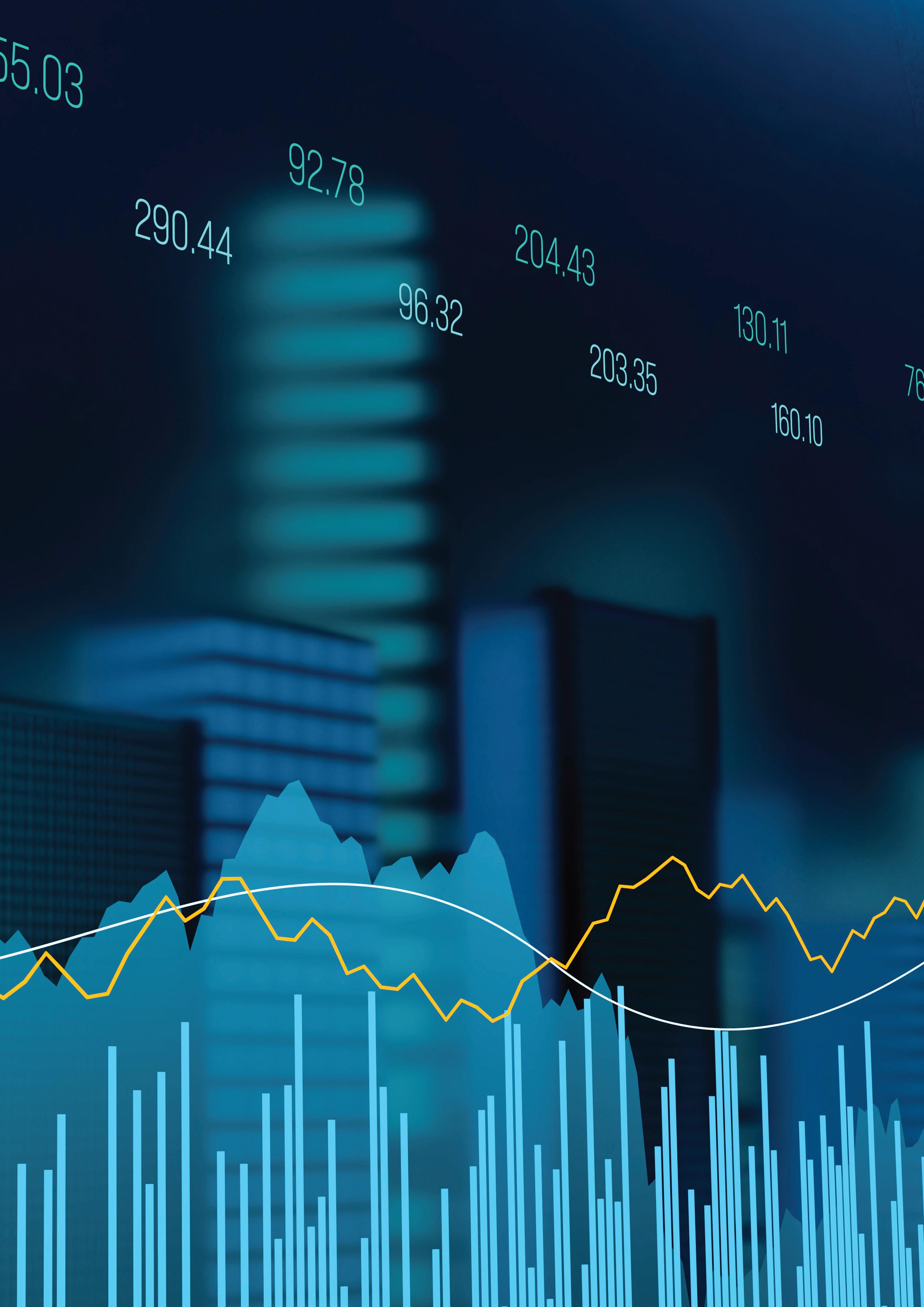


Sectoral flows—where the money went
Investors in 2025 favoured sectors offering both growth and resilience. Renewable energy projects continued to attract infrastructure capital, often blended with development finance and green bond issuance.
Fintech remained a magnet for private and public capital: Digital payments, micro-lending and enterprise SaaS for African markets drew interest from both PE and strategic corporate investors.
Commodities—mining and energy—saw capital directed into projects with clear transition or value-adding narratives: downstream processing, energy efficiency in mining operations and critical mineral projects for batteries.
Agriculture and logistics deals benefited from the region’s urgent food security and supply chain priorities, drawing patient capital
where governments provided credible offtake or subsidy frameworks.
Policy, ESG and the new investor checklist
A notable theme in 2025 was how ESG and local policy alignment became gating criteria rather than box-ticking. International LPs increasingly demanded credible transition plans, community consent and quantifiable impact metrics for deals in sensitive sectors. This raised the bar for sponsors and pushed many to incorporate sustainability-linked features into debt and equity documents. At the policy level, regional efforts to harmonise capital market rules and reduce cross-listing frictions continued to be discussed within the SADC, reflecting longstanding ambitions to deepen regional financial markets and mobilise domestic savings for development.
RENEWABLE ENERGY PROJECTS CONTINUED TO ATTRACT INFRASTRUCTURE CAPITAL, OFTEN BLENDED WITH DEVELOPMENT FINANCE AND GREEN BOND ISSUANCE.

Risks and constraints: Currency, liquidity and geopolitics
Despite the upbeat stories, challenges remain. Currency volatility in several SADC countries increased risk premiums for foreign investors, and thin local institutional investor pools limited the ability to absorb large domestic offerings. Global rate uncertainty also raised the cost of capital for sovereigns and corporates seeking external funding. Geopolitical tensions and supply chain disruptions intermittently dented investor confidence, making diligence and structuring central to deal success.
For corporates seeking capital, the lesson of 2025 was clear: Get the story right and the structure right. Deals that combined operational scale-up plans, credible ESG roadmaps and clear exit pathways found buyers. Hybrid financing—mixing concessional finance, PE and local debt—unlocked transactions that pure commercial finance could not.
For policymakers, priorities that would unlock more investment include strengthening debt transparency, reducing foreign-exchange bottlenecks and accelerating reforms that deepen domestic institutional investor pools (pension funds, insurance). Progress on regional capital market integration remains a strategic lever for attracting longer term investment into cross-border infrastructure and regional champions.
Outlook for 2026: Cautious expansion if certain conditions hold
Looking ahead to 2026, the most likely scenario is gradual expansion in capital flows to the SADC—but only if a few conditions are met. First, global financial conditions need to remain broadly accommodative or at least predictable: Sharp rate shocks would quickly reverse appetite for higher risk frontier credits. Second, issuers and sponsors must continue to embed de-risking mechanisms (offtake agreements, blended finance, credible ESG frameworks) that meet sophisticated investor standards. Third, better policy co-ordination across the SADC—particularly on cross-listing facilitation and FX management—will materially improve market depth.


If these conditions hold, expect three manifest trends in 2026:
1. More blended finance for infrastructure and energy transition projects.
2. Selective resurgence of IPOs and secondary listings in Johannesburg and other regional exchanges as companies scale.
3. A further professionalisation of the PE sector with larger fund closes—albeit concentrated among managers that show strong local networks and execution records.
For investors, the region is not a sprint, but a carefully adjudicated race—returns are there for those who pair local insight with rigorous risk management.
For policymakers, the prize is equally clear: Improved regulations, deeper domestic capital pools and better regional co-ordination can convert tentative capital flows into sustained investment that supports jobs, industrialisation and resilience across southern Africa.
After a year of selective wins in 2025, 2026 offers the chance to convert momentum into permanence—if capital and policy continue to move in step.





This year has been one in which the African Continental Free Trade Area (AfCFTA) moved from promise toward practical implementation across southern Africa.
In the Southern African Development Community (SADC) region, political buy-in has deepened and a string of technical initiatives—from rules-oforigin workshops to tariff scheduling—have nudged businesses and customs administrations closer to trading under continental rules.
Yet, persistent infrastructure gaps, payment frictions and unfinished negotiations mean that much of the real prize—integrated regional value chains and industrialisation—remains conditional on followthrough next year.
From political signals to technical steps
SADC ministers used the region’s trade agenda in 2025 to signal renewed commitment to AfCFTA implementation. At the mid-year Committee of Ministers of Trade, leaders repeated calls for accelerated intra-regional trade, industrialisation and the harmonisation of national approaches to AfCFTA rules: a practical acknowledgement that political endorsement alone will not move goods faster across borders without sustained technical work. This ministerial momentum translated into a steppedup calendar of regional workshops and consultative meetings designed to iron out the technical plumbing of the agreement.
On the technical front, rules of origin—the backbone of which goods qualify for preferential treatment— received concentrated attention. The SADC Secretariat, working with the AfCFTA Secretariat and partners including the World Customs Organization, ran targeted training to build customs and trade officials’ capacity to apply AfCFTA rules correctly. Those exercises are important: When origin documentation is unclear or mistrusted, customs administrations default to conservative rulings that choke off preferential trade flows. Improving the competence and confidence of officials is a necessary condition for trade to shift from informal corridor flows to formal AfCFTA channels.
What changed for business in 2025?
Two practical shifts mattered for traders this year. First, an increasing number of SADC governments moved to align national tariff schedules and to prepare their phase-down commitments. The AfCFTA’s design is gradual—countries classify goods into categories and agree phase-down timetables—and 2025 was dominated by negotiations and timetable finalisation rather than wholesale tariff disappearance. Clarity on schedules reduces uncertainty for importers, exporters and investors planning cross-border

value chains.
Second, beyond tariffs, the focus sharpened on non-tariff measures (NTMs): sanitary and phytosanitary standards, technical barriers to trade, and customs processes. Malawi, Zambia and others reported lodgings of technical working groups to align standards for key agricultural commodities and inputs: a welcome shift, because the majority of SADC intratrade remains agricultural and input-intensive manufacturing where standards erect the highest practical barriers.
Where the gains are showing— and who is feeling them
The early gains are uneven, but visible. Formal exporters of processed agricultural goods and light manufactures find the AfCFTA framework opening new buyer pools and giving them stronger negotiating positions in regional tenders. Crossborder firms operating in mining services and logistics are using early harmonisation of customs procedures to propose consolidated warehousing and bonded logistics solutions that make multi-country supply chains feasible.
Yet, informal traders—many of whom dominate border towns—still face bureaucratic and infrastructure hurdles that limit their ability to shift from cashand-carry markets to documented AfCFTA trade. Business associations and labour groups have called for complementary policies to ensure liberalisation benefits jobs and does not simply deepen consolidation in the hands of larger firms.
The big implementation hurdles
Three structural choke points came into sharper relief in 2025:
1. Infrastructure and border efficiency Poor road and rail linkages, weak border facilities and the persistent cost of time in transit still blunt the competitive gains of preferential tariffs. Regional corridors need investment and better border management to translate tariff preferences into real cost savings.
2. Payments and currency friction
Cross-border payments remain costly and slow when they must be routed through dollar corridors or use correspondent banking chains. The persistence of multiple currencies and limited local currency payment arrangements raises working capital needs for traders and creates FX exposure that undercuts competitiveness. International and regional banks and bodies have signalled support for payment system innovations, but adoption and scale remain work in progress.
3. Completion of outstanding protocols
While the AfCFTA’s legal architecture—Trade in Goods, Trade in Services and Dispute Settlement—is in place, negotiators are still working on complementary instruments such as the Investment Protocol, Competition Policy and detailed phase-down schedules. Until these are finalised and transposed into national law coherently, businesses face legal uncertainty when scaling operations across borders.
What to watch in 2026: The business outlook
If 2025 was about readiness and technical scaffolding, 2026 must be the year of execution. There are four developments to watch closely in the year ahead:
1. Tariff phase-down activation
Countries are working toward activating negotiated phase-down schedules. That process will create ‘policy predictability windows’ during which firms can plan investments in regional value chains. Businesses should map their suppliers and customers against the phase-down timetable and use it to guide sourcing, manufacturing and pricing decisions.
2. Scaling customs digitisation and origin verification
National customs administrations that move rapidly to digitise origin certification—and to interlink systems regionally— will be able to reduce time-atborder substantially. Private sector players in logistics and fintech will have opportunities to off er integrated services that bundle documentation, compliance and payment.
3. Financing corridor upgrades
Expect intensified conversations between governments, development finance institutions and private infrastructure funds. Closing the region’s logistics financing gap will be decisive for moving higher value goods competitively across borders.
4. Inclusive trade measures
There will be pressure from civil society and labour groups for member states to adopt social and labour safeguards, and for donors to underwrite retraining and SME (small & medium enterprise) support that help smaller traders benefit. How governments design those complementary policies will shape whether AfCFTA becomes an engine of inclusive industrial jobs or accelerates the rise of a few large regional champions.


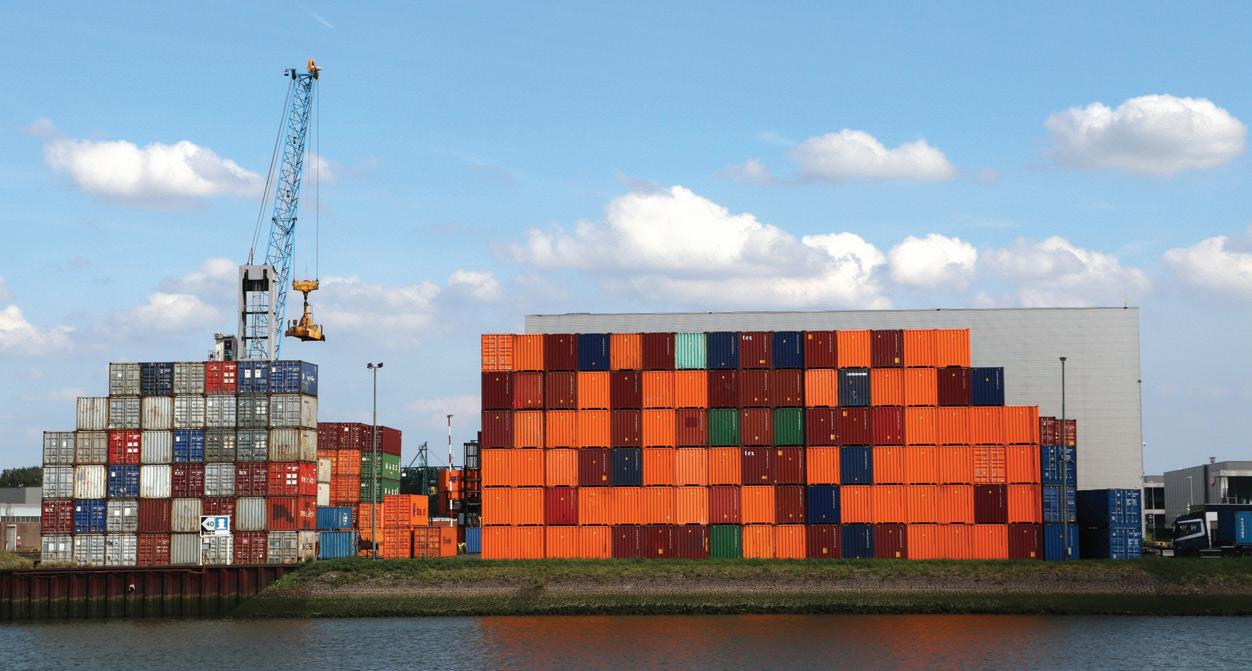
Practical advice for SADC businesses today
For southern African exporters and service providers, three practical moves will make you AfCFTA–ready in 2026:
1. Audit your supply chain for rules of origin: Know where your inputs originate and what percentage local content rules apply to your product lines. Invest now in documentation systems rather than scrambling when preferential opportunities appear.
2. Lock in trade finance and local currency arrangements: Talk to banks and fintechs about instruments that mitigate FX exposure and shorten payment cycles. Early adopters of regional payment solutions will enjoy working capital advantages.
3. Engage in standards harmonisation forums: Businesses that participate in sectoral technical committees can influence standards formulations and reduce the likelihood of costly technical rejections.

SADC MINISTERS USED THE REGION’S TRADE AGENDA IN 2025 TO SIGNAL RENEWED COMMITMENT TO AFCFTA IMPLEMENTATION.

Bottom line
2025 was a year of hard, necessary groundwork for AfCFTA in the SADC region. Political commitment, capacity building and preparatory tariff work moved the needle from rhetoric to readiness.
But the step change—cheaper, faster, predictable regional trade that supports value chain formation and job creation—depends on 2026 delivery: tariff phase-downs being operationalised, customs digitisation scaled, financing for logistics realised, and inclusive measures adopted to bring SMEs and informal traders into the fold.
For SADC businesses, the next 12 months offer both opportunity and test: Get your operational house in order, engage in the technical process, and be ready to scale when the AfCFTA’s practical benefits begin to pay out.



After a bruising few years, 2025 has been a year of cautious repair and pragmatic investment across southern Africa’s ports, railways, roads and air cargo networks. Governments and private players have pushed projects that target the two critical bottlenecks for regional trade: moving goods faster from ship to hinterland, and making the hinterland itself a reliable, lower cost route to market.
The result has been a flurry of corridor-level activity, targeted port upgrades and practical supply chain innovations that show how the region can convert geography into competitiveness.
Ports: Throughput recovery, data and smarter terminals
Ports remained the choke point for much of the decade; in 2025, the emphasis shifted from headline mega-projects to improving throughput and predictability.
Several southern African ports accelerated investments in modernised container handling—not necessarily brand-new terminals, but targeted yard equipment, shore cranes and automation at key berths that reduce vessel turnaround and stack dwell times.
Governments and regional bodies also began centralising port performance data to improve transparency for shippers and freight forwarders; a ports ‘data book’
and connectivity portal initiative launched this year is already helping operators benchmark waiting times, berthing schedules and cargo release metrics. The practical payoff: better planning for inland transport and reduced demurrage exposure for exporters.
Rail: Open tracks and private operators
Rail has been the story of the year. Long-running capacity shortfalls—underinvestment, cable theft and maintenance backlogs—finally provoked decisive policy change in some countries.
The most consequential 2025 development for the subregion was South Africa’s move to allow private train operators access to the national freight network, opening slots on major bulk and general freight routes to trained private firms. The move is designed to lift rail volumes quickly, add rolling stock capacity and reduce overreliance on road for heavy freight. Early entrants are expected to add millions of tonnes of rail capacity
over the next two years, easing pressure on ports and roads.
Beyond South Africa, multilateral and donor-backed investments continued to strengthen strategic corridors: The Nacala, Beira and Lobito corridors were highlighted in 2025 as templates for public-private collaboration and co-ordinated cross-border investment. These corridor projects combine rail rehabilitation with upgraded handling at inland terminals to connect landlocked producers to deepwater ports more efficiently.
Roads and borders: Smarter flow, not just new asphalt Road upgrades remained essential, but less spectacular in 2025: Governments focused on trade facilitation at the border rather than only building new highway kilometres.
One clear trend was the push for one-stop border posts (OSBPs) and digital pre-clearance systems that slash the time trucks spend queuing and completing paperwork. Logistics providers
report noticeable gains when borders adopt electronic sanitary/ phytosanitary certificates and prelodgement for customs—small process changes that, multiplied across dozens of crossings, shave days off a shipment’s door-todoor time.
Investment in pavement life extension and targeted bypasses around key urban bottlenecks also improved reliability for highvalue, time-sensitive freight.
Air cargo: Growing niches and the e-commerce lift
Air freight in 2025 continued to benefit from two complementary forces: the growth of e-commerce, and airlines’ renewed focus on cargo as a revenue stream. African air cargo markets showed rising demand for express and chartered services, especially for high-value perishables, pharma and timesensitive components. Airport authorities in the region moved to upgrade cold chain handling and to create dedicated cargo zones that can process regulatory compliance faster, helping exporters get
THE NACALA, BEIRA AND LOBITO CORRIDORS WERE HIGHLIGHTED IN 2025 AS TEMPLATES FOR PUBLICPRIVATE COLLABORATION AND CO-ORDINATED CROSS-BORDER INVESTMENT.




premium prices for perishable goods and vaccines.
Conference platforms and trade shows in 2025 reflected greater industry optimism about expanding Africa’s air cargo capacity—but stakeholders stressed that cost competitiveness and customs predictability must improve for the sector’s full potential to be realised.
Supply chain innovations that took hold in 2025
Two categories of innovation produced measurable gains in 2025: data-driven transparency and pragmatic multimodality.
Data and digital paperwork
Freight management platforms that combine real-time tracking with automatic document transfer and customs pre-lodgement reduced administrative friction. Where ports and customs authorities allowed API access to schedules and release notices, forwarders could plan inland haulage more tightly and reduce empty truck runs.
Multimodal hubs and inland ports
Several inland terminals matured from pilot projects into operational hubs that link rail, road and warehousing under a single tariff and booking reference. These hubs help exporters consolidate containers, manage cross-border compliance centrally and offer value-added services such as packing and cold storage— shortening the effective supply chain and lowering per-unit logistics cost.
Both approaches share a characteristic: They are lowly glamour, high-impact fixes. They do not rely on perfect infrastructure; they rely on co-ordination, standards and commercial incentives.
The winners in 2025 were companies that adapted their logistics models, using blended mode strategies, partnering with new private rail operators, and paying for velocity rather than only chasing the cheapest tariff.
Risk management changed, too: Firms invested more in visibility tools and short-term inventory buffers to smooth the impact of intermittent port or rail delays.
Consolidation, private participation and targeted digitisation
Expect 2026 to be a year of consolidation. The structural moves made in 2025—opening rail access to private operators, the maturing of corridor projects and greater transparency at ports—will begin to show system-level effects next year if they are implemented consistently.
Shippers and logistics managers should re-price their networks for reliability, not just for lowest cost. That means negotiating performance-based contracts with carriers and terminals, investing in digital visibility and integrating multimodal options into procurement decisions.
Governments should keep the focus on pragmatic reforms—OSBPs, customs digitisation and transparent port performance metrics—because those moves unlock value fast.
2025 was the year southern Africa stopped treating logistics as an unsolvable deficit and started treating it as a manageably messy system. The gains this year are not miraculous; they are incremental upgrades, smarter contracting and the first real examples of private-public complementarity. If momentum continues into 2026, businesses that invest in visibility and flexibility will enjoy shorter lead times, lower inventory costs and better access to global markets.
The geography has not changed, but the way the region moves goods through it is getting decidedly smarter.
1. Private rail operators scale up. If early operators secure reliable access and offloading windows at ports, rail volumes should grow materially, shifting some bulk and containerised traffic off road and reducing unit transport costs.
2. Corridor investments move from planning to implementation. Cross-border corridor projects that were prioritised in 2025 will start substantive civil works or equipment procurement, particularly where donor finance and private-sector commitments are aligned.
3. Digital customs and port data expand. More ports and customs administrations will pilot API-based data sharing and pre-clearance regimes. This is a low-cost, high-return area where the private sector and customs can co-operate to reduce dwell times.
4. Air cargo capacity improves selectively. Airports that invest in coldchain and simplified cargo handling will attract more perishable and pharma exporters, but airline route economics will still determine how much belly capacity is available for general cargo.


THE MEGA-PROJECTS THAT RESHAPED SOUTHERN AFRICA IN 2025—AND WHAT COMES NEXT

This year saw southern Africa’s infrastructure pipeline move from plans into heavy equipment, with a string of high-value projects either reaching key investment decisions, starting construction or—in a few important cases— being brought into commercial service.
For businesses and investors tracking regional trade, energy and logistics bottlenecks, 2025 has been the year when long-promised mega-projects began to deliver visible momentum.

Energy: Big decisions—and unfinished business Energy projects dominated the headlines in 2025:
Offshore Mozambique’s Rovuma Basin received one of the clearest votes of confidence in October when Eni and partners signed the final investment decision (FID) for the Coral Norte floating liquefied natural gas (LNG) project—a twin to the Coral Sul Floating LNG that began exports earlier in the decade. Coral Norte will materially lift Mozambique’s LNG capacity and bring billions in investment, contracts and local employment if it proceeds on schedule.
The same month, Mozambique’s government said conditions had been met for TotalEnergies to resume its large onshore LNG scheme: a project hobbled by a security crisis in Cabo Delgado in 2021. If Total’s restart proceeds, it would mark a major rebound for one of Africa’s largest private energy investments. The combination of offshore progress and onshore restart would reposition Mozambique as a core global gas supplier over the next decade, but security, community consent and logistics will remain key constraints.
In the Democratic Republic of Congo, multilateral funders and governments have moved the long-









running Inga programme forward. The World Bank approved initial financing to kick off a phased development programme around Inga 3: a project that, if realised, could transform regional power flows, but also raises environmental, governance and financing questions.




Finally, Tanzania’s huge Rufiji Dam and Julius Nyerere Hydropower Station continued toward commissioning phases in 2024–25: a project that will add more than 2GW of baseload capacity to the regional grid and change power dynamics in East Africa. For utilities and mining businesses, new generation capacity is an important signal that energy constraints are being tackled at scale.

double container throughput and position Maputo as a regional logistics hub for landlocked neighbours. The port expansion reflects private sector appetite to de-risk supply chains from congested South African terminals and to capture diverted cargo flows.

Transport & logistics: Rails, ports and corridors get real money
After years of talk about the NorthSouth Corridor and unlocking inland mineral and agricultural flows, 2025 brought concrete deals and construction starts.


Mozambique’s Port of Maputo began the first phase of a US$2billion expansion this year: a DP World–led initiative to more than


Perhaps most emblematic of regional rail renewal was the renewed focus on the TanzaniaZambia Railway (TAZARA). Recent agreements and financing commitments aim to rehabilitate the line so it can serve as an efficient copper corridor from Zambia’s Copperbelt to the port of Dar es Salaam. A revitalised TAZARA would reduce reliance on longer, often congested alternatives and lower logistics costs for mineral exports.



Why these projects matter—and the headwinds they face Taken together, the energy, transport and hydropower projects of 2025 are about three things: unlocking export revenues (gas, minerals); improving the reliability of regional value chains (ports, rail); and closing energy deficits that constrain industrialisation.




In South Africa, government and port authorities pressed ahead with elements of the KwaZulu-Natal Ports Master Plan—including berth deepening and reconstruction at Durban—to alleviate the chronic bottlenecks that have long frustrated exporters and importers. Upgrading South Africa’s seaports remains central to regional trade flows and investor confidence.




But the same projects illustrate persistent regional challenges. Financing is still a patchwork of export finance, Chinese concessionary deals, commercial banks and multilateral loans—which raises tenor and conditionality questions. Mozambique’s LNG prospects are shadowed by security and community issues in the north; Inga’s scale raises environmental and governance scrutiny; rail and port upgrades are capital-intensive and require complementary investments in customs, roads and hinterland interchanges to deliver full value.

These are not fatal problems, but they make timely delivery a function of political will and co-ordinated public-private planning.





The momentum built in 2025 points to several plausible starts or inflection points in 2026:
With FIDs in hand and state partners aligned, offshore Coral Norte should move into heavy fabrication and installation phases; the TotalEnergies onshore picture may become clearer if the company formally lifts force majeure and resumes contracting. These moves will attract services contracts and opportunities for local content.
Rehabilitation contracts and concession arrangements are expected to translate into on-the-ground track works and signalling upgrades—a multi-year programme, but one that should show visible starts in 2026 if financing flows as reported.
Port expansions and hinterland integration accelerate
Maputo’s phase-one works and South Africa’s Durban upgrades should prompt adjacent investments in road links, container yards and rail spurs. Private logistics players will look to secure terminal capacity and develop value-added services near expanded berths.
Inga’s phased programme will move from preparatory investments into initial construction activities
Expect donor-backed community and preparatory packages to continue, with limited civil works and land-use steps beginning subject to approvals and partner alignment.
What businesses should watch and do now
1. Follow early contracting rounds: EPC and ancillary services contracts for LNG, ports and hydropower are the first commercial signs that projects are truly moving.
2. Stress-test supply chains: Projects that reduce congestion will open arbitrage opportunities—but only if your logistics and customs processes are ready to exploit new routes.
3. Assess country risk and community engagement profiles: Security concerns in parts of northern Mozambique and governance complexity in the DRC mean higher due diligence for on-theground investments.
4. Look for public-private partnership windows: Governments are eager to leverage private capital for delivery; firms that can structure blended finance or offer local content will be competitive.
Conclusion
2025 has been a turning point: a cluster of longplanned mega-projects moved from memoranda to money and, in some cases, to concrete. The coming year should reveal whether that momentum translates into sustained construction, higher regional trade throughput and more reliable power—outcomes that would reshape the SADC business landscape.
For investors and corporates, the prize is substantial, but so is the need for careful risk management and realistic timetables. The region’s strategy is clear: Build the backbone—now the hard work is to deliver it, responsibly and on budget.

THE COMING YEAR SHOULD REVEAL WHETHER THAT MOMENTUM TRANSLATES INTO SUSTAINED CONSTRUCTION, HIGHER REGIONAL TRADE THROUGHPUT AND MORE RELIABLE POWER


SOUTHERN AFRICA’S ENERGY TURN: MEASURABLE MOMENTUM IN 2025—AND A CAUTIOUSLY OPTIMISTIC 2026 AHEAD

This year has been one of accelerated activity— and ambivalence—across the Southern African Development Community (SADC). Governments, utilities and private developers pushed forward on big renewable-build programmes, grid-modernisation schemes and nascent green-hydrogen ambitions.
At the same time, project risk, financing stress and painful social questions about land and water have reminded policymakers that an energy transition in SADC is as much political and social as it is technical.
Tangible capacity gains, but still a long way to go SADC officials report measurable new capacity additions in 2024–2025 that show the region is moving past announcements to delivery. Ministers noted the region added around 2 885MW of new generation capacity in that period—a useful step upward that brings regional capacity above 85 000MW, but still leaves shortfalls in several member states because of drought-impacted hydro, ageing plants and transmission constraints.
Those figures underline a mixed picture: progress, but not enough yet to close reliability gaps or fully wean several economies off expensive, polluting thermal generation.
Big, headline projects: Hydropower and green hydrogen
Two types of large projects dominated headlines in 2025 and illustrated the dual pathway SADC is pursuing: traditional renewables at scale (notably hydro) and next-generation, highvalue technologies (notably green hydrogen).
Mozambique’s Mphanda Nkuwa hydro project—positioned as the region’s single biggest new conventional renewable push—exemplifies the scale of
ambition. The roughly US$6billion Mphanda Nkuwa scheme aims to add significant baseload renewable capacity and shore up regional power balances over the next decade; it is also part of a broader push to use hydropower to underpin industrialisation and cross-border trade. But large dams carry familiar financing, environmental and social complexities that will determine whether they are stabilising assets or long-term liabilities.
Meanwhile, Namibia has emerged this year as one of the region’s most visible experiments with green hydrogen and ammonia as export industries. Gigawatt-scale, vertically integrated projects— promoted under national blueprints and developer-led consortia—have attracted global attention because they promise to turn abundant wind and solar resources into higher value products and jobs. The Hyphen project, for example, represents the kind of vertically integrated green-hydrogen vision Namibia and partners are trying to realise. Those plans create new industrial pathways, but they also raise questions about water, community consent and the pace at which offtake markets will develop.
Private sector, IPPs and storage: The quiet overhaul of power systems
Beyond headline projects, 2025 saw faster movement on the plumbing of modern grids: integration of independent power producers (IPPs), wider acceptance of battery energy storage, and new procurement vehicles to bring private capital into balancing and ancillary services.
South Africa’s battery energystorage IPP programme—and related procurement windows— signals a shift from simply adding nameplate renewable capacity toward making those renewables dispatchable and grid-friendly. Storage deployment will be central to managing variability across




SADC as solar and wind penetration increases.
This uptake of private storage and modular renewables is important for mining-heavy economies and industrial zones that need reliable, firmed power to attract investment. It also creates opportunities for new business models: co-located renewables + storage for industrial offtakers, merchant power trading, and embedded generation for towns and mines.
Integration and markets: Building a regional backbone
There is also a clearer regional focus on market design. The Southern African Power Pool (SAPP) and regional planners have pushed for deeper integration: more cross-border trade, financial instruments to manage variability, and participation by non-state players such as private developers and corporate buyers. A more active regional market would let surplus renewable energy flow to deficit areas, lower system costs and attract capital—but it will require harmonised rules, strengthened transmission corridors and trust among member utilities.
Progress here in 2025 has been incremental, but visible in policy conversations and pilot market arrangements.
Innovation in SADC this year was not only about megawatts. We saw momentum on:
• Green industrial clusters: Countries with ports and resources are packaging renewables, desalination and hydrogen to support fertiliser and ammonia production.
• Mini-grids and distributed solutions: Developers scaled minigrids and municipal rooftop programmes that address rural electrification and business continuity.
• Digitisation and demand-side management: Utilities piloted smarter metering and flexibility markets to help manage peaks without always firing thermal plants.
However, translating those innovations into local industrial value chains (manufacturing inverters, batteries, electrolyser components) remains a long-term task that depends on supply-chain policy, skills development and predictable demand signals.
The risk checklist: Finance, water, social licence
Momentum has not been riskfree. Several headline projects have run into investor caution or community resistance. In late 2025, some major international partners reprised concerns about exposure and viability in nascent hydrogen deals: a reminder that commercial offtake commitments, cost trajectories and social licence are non-negotiable for longhorizon projects. These dynamics mean that while ambition has risen, actual delivery timelines and investor confidence will hinge on clear procurement frameworks, robust environmental and social safeguards, and creative blended finance structures.
Water is a cross-cutting constraint. Many green hydrogen and large hydro ambitions depend on desalination or reliable river flows. Droughts (and the El Niño period that stressed hydro reserves) have shown the vulnerability of water-dependent options if planners do not marry integrated water-energy strategies to power planning.
MOZAMBIQUE’S MPHANDA NKUWA HYDRO PROJECT— POSITIONED AS THE REGION’S SINGLE BIGGEST NEW CONVENTIONAL RENEWABLE PUSH— EXEMPLIFIES THE SCALE OF AMBITION.

Financing the transition:
Blended finance and conditional support
The financing picture in 2025 made two things clear. First, SADC will need blended finance— concessional funds, guarantees and public-private partnerships—to de-risk early commercial projects and crowd in private capital.
Second, donor and geopolitical
interest in African clean energy has accelerated, with multilateral and bilateral initiatives offering targeted support for grid upgrades, just transition measures and early hydrogen stages. Still, the cost of capital remains higher for many projects than for comparable investments elsewhere, so fiscal prudence and credible project pipelines matter.
Looking toward 2026, expect a mix of consolidation and selective acceleration:
• More storage and grid-firming: Procurement windows under storage IPP programmes should deliver contracted projects and pilot commercial arrangements. Countries will increasingly prioritise storage as a non-negotiable complement to intermittent renewables.
• Progress—and friction—on green hydrogen: Some Namibian and coastal projects aim to move from permitting into initial construction phases; but investors will demand clearer offtake pathways, community consent and water strategies. Watch partners’ announcements and whether major offtakers return after 2025’s reassessments.
• Big hydropower moving slowly forward: Megaprojects like Mphanda Nkuwa will remain in the headlines as governments seek concessional finance and regional Power Pool arrangements to justify cross-border benefits; their timelines to operation are multi-year and contingent on financing and safeguards.
• Regional market deepening: Expect pilot market products (balancing markets, renewable trading corridors) to expand, accompanied by incremental regulatory harmonisation across SAPP members to enable more cross-border flows.
• Stronger emphasis on a just transition: Labour, land and community impacts will shape which projects proceed. Countries that align social impact planning with project financing will find it easier to advance large investments.

For southern African corporates, utilities and investors, 2026 will be a year to sharpen strategy:
• Pursue flexible offtake contracts that can accommodate storage and hybrid projects.
• Factor water risk into project design (especially for hydrogen and hydro).
• Engage early with communities and regulators to reduce social licence friction.
• Explore blended-finance partners and hedge tools to reduce FX and interest-rate exposure.
From declarations to delivery—cautiously hopeful SADC’s energy transition in 2025 has been defined by pragmatism: a mixture of large national projects, practical grid upgrades and a growing private sector role. There are real signs of movement from policy to procurement to construction, but funding gaps, social and environmental trade-offs, and market design challenges remain.
The next 12 months will tell whether the region converts momentum into resilient, inclusive energy systems—and whether new industries such as green hydrogen move from visionary promise to credible export sectors.
If policymakers, investors and communities co-ordinate on risk sharing, finance structuring and social safeguards, 2026 could be the year the region’s transition gains durable, investable shape.


RESPONSIBLE MINING IN SOUTHERN AFRICA: 2025 PROGRESS AND THE ROAD TO 2026


This year, the mining sector in the Southern African Development Community (SADC) operated under an increasingly public spotlight. Governments, financiers and communities are no longer content with output and jobs alone; they demand real, measurable progress on environmental stewardship, social benefit and accountable governance.
In 2025, several of the region’s leading miners moved beyond glossy pledges to tangible programmes: cutting emissions where feasible, expanding community education and livelihoods initiatives, and strengthening disclosure.


At the same time, global commodity shifts—falling prices for some precious metals and rising demand for battery- and grid-related minerals—are reshaping strategic priorities.
From commitments to delivery: What changed in 2025
Across South Africa and the wider SADC region, major producers sharpened their sustainability architecture. Anglo American, SibanyeStillwater and Harmony, among others, published fresh reporting and rolled out local projects that show a shift from compliance to integrated sustainability planning.
Anglo’s 2024/25 reporting cycle reiterated its Sustainable Mining Plan pillars, with a renewed focus on “thriving communities” through health, education and livelihoods programmes, and clear public targets for community impact and biodiversity.
Sibanye-Stillwater’s public materials emphasise a four-pillar sustainability approach (Planet, People, Prosperity, Governance) backed by concrete community inputs: skills training, school upgrades and civic infrastructure projects that purportedly reached hundreds of thousands of beneficiaries in recent years. The company also made operational adjustments in 2025 as it navigated weaker palladium markets and restructuring challenges, highlighting a trend: ESG (environmental, social governance) programmes are increasingly being designed to be resilient to commodity cycles.

Community development: More than donations
A recurring theme in 2025 was the professionalisation of social investment. Instead of oneoff donations, companies are designing multi-year partnerships that target measurable outcomes: early childhood education, vocational training tied to mineadjacent supply chains, and small enterprise incubation.
Sibanye’s reported initiatives (school Wi-Fi, teacher training and enterprise support) and Anglo’s “thriving communities” programmes are examples of investments that explicitly aim to increase local employability and diversify local economies beyond mining. These programmes also reflect a pragmatic governance shift: Social investment is being tied to measurable key performance indicators and external stakeholder forums.

That said, civil society watchdogs remain sceptical. Activist groups and local constituencies continue to demand stronger evidence that benefits accrue equitably, that land and water rights are protected, and that grievance mechanisms actually resolve disputes rather than papering over conflict. In short, community engagement is maturing—but verification and trust building remain unfinished work.
Environmental moves:
Harmony continued to foreground water management and local development in its sustainability framing, updating its sustainable development framework to link operational water stewardship and community health with long-term social licence to operate. That emphasis on resource stewardship is consistent across the region: water and biodiversity management moved from peripheral reporting items to central operational considerations in 2025.
There are SADC mining companies outside South Africa that are getting closer to being exemplary in responsible mining. But being exemplary implies consistency at scale, transparent accountability, robust environmental and social safeguards, and resilience to external shocks.
First Quantum Minerals Zambia—through its subsidiaries including Kansanshi and Trident mines—and Vulcan International (operator of the Moatize Coal Mine in Mozambique) are perhaps the closest so far. They have measurable, certified practices, public reporting and relatively mature community engagement.

Emissions, water and circularity
Technological and managerial measures to reduce environmental footprints gathered pace in 2025. Companies are reporting targeted emissions reductions, more rigorous tailings management practices, and pilots for circulareconomy approaches—both to reduce waste and to retain more value locally.
Regional policy signals also intensified: SADC’s strategic planning documents and a nascent regional circular economy strategy are nudging miners and policymakers toward

integrated resource management that supports socio-economic development while limiting environmental harm. These policy frameworks, when implemented, will provide important leverage for consistent environmental standards across borders.
Governance and transparency:
Hardening the rules
2025 saw a stronger appetite for auditability and credible reporting.
Leading firms are aligning disclosure with international frameworks, and local regulators are increasingly signalling a willingness to scrutinise environmental licences, labour



practices and benefit-sharing arrangements.
That trend matters: Investors and downstream technology firms (which now source battery minerals) require traceability and verified ESG performance as a precondition for contracts and capital. Companies that fail to provide transparent, independently verifiable data risk losing access to premium markets and capital.
The commodity context: Winners and losers
Global commodity dynamics in 2025 altered strategic calculations. Prices for some platinum group metals and palladium have




remained volatile after 2022 peaks and subsequent corrections, and that pressure aff ected company profitability and asset valuations (Sibanye’s impairments being a high-profile example).
At the same time, demand for copper, lithium and other batteryrelevant minerals continued to climb as the energy transition accelerated, prompting producers to prioritise deposits that feed electrification and renewable technology supply chains. The upshot: Miners are redeploying capital toward critical minerals while using sustainability credentials as a differentiator in a competitive global market.








What
1. A sharper split between legacy and transition metals. Expect capital and policy attention to concentrate on copper, lithium and cobalt projects that can be proved up quickly and mined with decent ESG practices. Projects perceived as high-risk on social or environmental grounds will struggle to attract finance.
2. Tighter reporting expectations and conditional capital. Lenders and offtakers will increasingly condition access to capital on credible, audited ESG performance and community-benefit metrics. Firms that can show independent verification will win lower financing costs and better commercial terms.
3. Regional policy co-ordination. SADC’s policy frameworks for sustainable environment management and circularity provide a platform for harmonised standards; 2026 should see more cross-border initiatives (resource corridors, shared water management projects) that reduce regulatory arbitrage and encourage investment flows.
4. Community expectations will harden. Communities will expect long-term economic diversification plans, not only temporary jobs. Companies that co-design enterprise development and education programmes with local stakeholders will have a clearer social licence to operate.
5. Operational resilience to price swings. Given the volatility of some metal prices, miners will continue to rationalise portfolios, divest noncore or underperforming assets, and prioritise operational efficiencies that reduce costs without undercutting environmental or safety standards. Recent restructuring moves by major players illustrate this necessary realism.
A RECURRING THEME IN 2025 WAS THE
Responsible mining as competitive advantage
Responsible mining in SADC is no longer a moral add-on; it is a commercial imperative. In 2025, leading companies demonstrated that credible ESG practices, when embedded into core strategy, reduce operational, reputational and financing risk—and open doors to critical markets tied to the energy transition.
The challenge for 2026 will be to translate improved reporting and pilot projects into system-wide practice: enforceable community agreements, verified environmental performance, and capital allocation aligned with the global shift toward electrification.
For regional policymakers and industry leaders, the task is clear: Keep raising the bar on transparency and stakeholder inclusion; align incentives so that sustainable, community-oriented projects attract capital; and support cross-border policy frameworks that lower regulatory uncertainty.
Done well, responsible mining will not only preserve ecosystems and livelihoods—it will also unlock the region’s strategic role in a greener global economy.





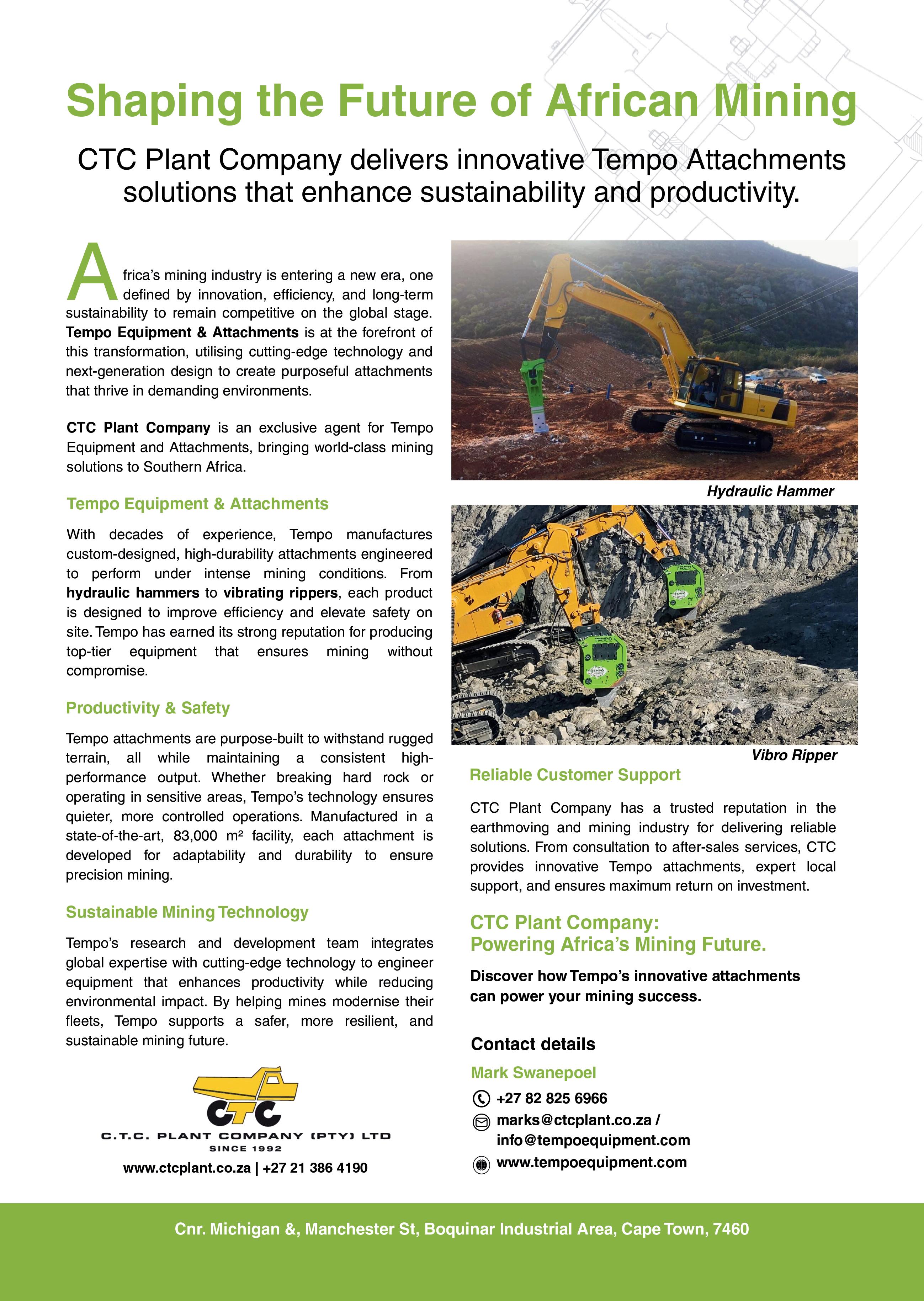




Southern Africa is quietly turning a technological corner. In fields and packing sheds across the Southern African Development Community (SADC) region, startups, research institutes and larger agribusinesses are stitching together satellite imagery, sensors, drones and digital marketplaces to tackle a longstanding problem: how to produce more nutritious food, more reliably, on less land and with fewer greenhouse-gas emissions.
This year has seen the region move from pilots and promises to far denser pockets of real-world impact—and that shift matters not only for national food systems but for global food security.
From sensors to decisions:
Precision farming reaches maturity
and buyer-facing forecasts that reduce spoilage through better planning. Those productionside improvements are already helping horticulture exporters and commercial grain producers smooth supply to regional and global markets.
Mechanisation and on-demand services: Lowering the cost of scale
Mechanisation remains one of the fastest levers for productivity, but tractors are expensive and underused in fragmented smallholder landscapes. Digital platforms that match tractor owners to farmers, manage fleets and provide pay-asyou-go financing have become indispensable.


Precision agriculture—using data from satellites, soil sensors and drones to apply water, fertiliser and pesticides only where needed— is no longer a niche in South Africa. Farmers are using remote-sensing platforms and on-farm Internet of Things to monitor crop stress, map field variability and target inputs to maximise returns and reduce waste.
One platform that exemplifies this model—connecting operators and smallholders through smartphone bookings


This is particularly important in SADC, where variable rainfall and ageing infrastructure make efficiency gains the fastest route to higher, climate-resilient yields. Evidence of this technology stack maturing can be seen in the rapid uptake of satelliteand sensor-driven monitoring systems across commercial and large smallholder operations in 2025.
Local companies are pairing analytics with practical services. Cape Town–based firms that convert imagery into yield forecasts and pest alerts have scaled beyond proof-of-concepts to provide packaging, logistics
and telematics—now supports hundreds of thousands of farmers across Africa, opening hundreds of thousands of hectares to timely planting and other operations. That model is expanding the practical reach of mechanisation in SADC, improving timeliness and reducing labour bottlenecks during critical seasons.

transporters, aggregators and retailers on unified logistics and payments rails—trimming days from delivery, reducing spoilage and creating real-time visibility for buyers.

Digital supply chains: Traceability, marketplaces and less waste Technology’s second big promise is to fix how food moves after harvest. Digital marketplaces and vertically integrated supply-chain platforms are linking farmers,

Firms that act as business-tobusiness marketplaces for fresh produce have raised significant capital this year to expand procurement and last-mile distribution capabilities, underscoring investor faith in digitally enabled supply chains that can scale across Africa. These platforms are already changing bargaining power in favour of more organised farmers and formal aggregators.
Traceability tools— some using blockchain as a backend—are being piloted to meet export requirements and premium markets for wine, citrus and horticulture. While blockchain is not a silver bullet, the concept of immutable farm-to-fork records is appealing to buyers demanding provenance and to regulators enforcing SPS (sanitary and phytosanitary) standards.

Research this year, however, has also highlighted realistic barriers: Infrastructure gaps, integration complexity and governance hurdles remain significant barriers to rapid blockchain adoption in African agri-food chains. Those challenges
mean traceability solutions will need hybrid designs that blend simpler digital records with progressive decentralised elements.
Smallholders, finance and climate-smart irrigation
Climate-smart irrigation and pay-as-you-grow financing are another growth area. Solar pump systems and precision irrigation kits, when combined with micro-insurance or carbon-finance linkages, can transform dry-season production for smallholders—converting subsistence plots into semi-commercial enterprises.
Models that combine hardware, training and off-taker linkages are proving especially resilient; they reduce reliance on erratic rain and help stabilise incomes, which in turn makes farmers more bankable.
What SADC contributes to global food security
Africa holds a disproportionate share of the world’s uncultivated arable land. But raw land alone will not feed the world—it needs data, logistics and finance.
SADC’s contribution to global food security will be threefold:
1. Yield gains from smarter inputs: Higher productivity per hectare through precision agronomy reduces the pressure to clear new land while boosting global supplies of key commodities and horticultural produce.
2. Resilient regional supply corridors: Digital platforms that shorten routes from farm to port or city markets reduce loss and volatility, making supply more reliable for importers even in distant markets.
3. Scalable service models: Pay-as-you-go mechanisation and irrigation, combined with fintech and insurance, create repeatable templates that other regions can adopt—accelerating productivity gains beyond SADC.
If Africa can scale these technology-enabled systems while protecting smallholder livelihoods and managing natural capital, the continent can be a stabiliser for global food systems rather than a persistent vulnerability.
The bottlenecks that matter
Technology alone will not deliver results. The most common blockers we still see are: poor rural connectivity and electricity, limited farmer digital literacy, fragmented land holdings that complicate mechanisation economics, and underdeveloped cold-chain and transport infrastructure. Policy fragmentation across borders also makes it harder to scale digital supply chains regionally. Recent analyses into blockchain and other advanced solutions have stressed that governance and interoperable standards must be prioritised if traceability is to move from pilot to norm.






Looking to 2026: What to expect The coming year should be about integration and scale rather than novelty. Expect four trends to define 2026
1. Platform consolidation: Smaller pilots will be aggregated into multi-service platforms that combine input supply, mechanisation booking, aggregation and market access. That will simplify value chains for farmers and buyers.
2. Finance meets data: Lenders will increasingly underwrite loans using farm-level telemetry and yield forecasts, moving beyond group guarantees to data-first credit models. Yield-forecasting tools are already being used by packers and financiers to reduce risk.
3. Climate finance and carbon services: Climate-smart practices verified by digital monitoring will open new revenue streams through carbon markets and climate finance, helping defray upfront hardware costs for irrigation and regenerative-practice transitions.
4. Deeper regional linkages: Cross-border logistics and harmonised standards across SADC will make it easier for surplus-producing zones to reliably supply deficit ones, cushioning shocks and smoothing seasonal volatility.

TRACEABILITY TOOLS, SOME BLOCKCHAINBASED, ARE BEING TESTED TO MEET EXPORT AND PREMIUM
WINE, CITRUS, AND HORTICULTURE.
A pragmatic roadmap for policymakers and investors
For SADC to realise these gains, three practical moves are critical: invest in rural broadband and electrification; fund scale-up pilots that integrate services (not standalone gadgets); and create interoperable data standards so that farm telemetry, marketplace records and supply-chain traceability can flow securely between actors.
Investors should prioritise business models that align farmer uplift with unit economics—scalable services that improve incomes while lowering unit waste will win.
Agriculture in southern Africa is not waiting for a single silver-bullet technology. Instead, the region is stitching together a mosaic of innovations—satellites, sensors, marketplaces and financing—that together can make farms more productive, markets more efficient and supply chains more transparent.
If 2025 was the year of experimentation reaching meaningful scale, 2026 could be the year SADC starts to export not just food but systems and standards that help stabilise global food supplies.


HOW FINTECH, AI AND BLOCKCHAIN ARE RESHAPING SOUTHERN AFRICAN BUSINESS IN 2025






In 2025, southern Africa’s boardrooms, storefronts and back offices are humming with new bits of code and fresh business models.
After a decade of pilots and proofs-ofconcept, a wave of digital innovations has moved from labs into live services— not as a novelty but as revenue drivers, efficiency levers and risk managers.
From mobile wallets that reach informal traders to machine learning systems that spot fraud in milliseconds, digital tech is becoming the plumbing of everyday business across the region.
Fintech remains the most visible driver of change. Mobile money and embedded finance are normalised in many parts of southern Africa, with telcos and challenger banks expanding product suites that go well beyond person-toperson transfers: Savings, microcredit, merchant payouts and insurance are increasingly embedded at the point of sale.


The boom is not only at national level; regional initiatives are now trying to make cross-border payments simpler and cheaper. In 2025, a major regional payments effort is pioneering local currency retail rails that aim to cut the cost and friction of trade between neighbouring countries—a tangible boost for small & medium enterprises (SMEs) that trade regionally.
The continent’s established digital banks and newer challengers continue to attract overseas capital and scale fast. That acceleration is feeding innovation cycles: APIs, instant collections and real-time risk models are now table stakes for any fintech that wants national reach.

Artificial intelligence has graduated from pilots to mission-critical systems in banking, telecommunications and logistics. Major South African banks and financial services firms are deploying AI across risk, compliance and customer service, using

machine learning for real-time fraud detection, dynamic credit scoring and generative AI chat assistants that speed customer journeys while cutting operating costs. These deployments are not about replacing people; they are focused on freeing them from routine work and improving decision speed and accuracy.
Outside finance, AI is powering supply chain visibility (predictive ETAs, automated claims), optimising energy usage in industrial plants, and even helping large agricultural suppliers forecast yields and manage input distribution.
Crucially, companies are pairing AI with governance guardrails— model registries, explainability audits and human-in-the-loop controls—to meet regulators’ expectations and keep customer trust.
While speculative crypto narratives have faded, blockchain technology has found pragmatic uses in the region. Tokenisation of assets—
from warehouse receipts to green bonds—is making previously illiquid assets tradable, unlocking capital for smaller players. Trade finance pilots and provenance tracking projects continue to use distributed ledgers to reduce paperwork, speed reconciliation and increase integrity in complex supply chains. Local industry reports show growing interest among banks and corporates in regulated, permissioned ledger systems tailored for commerce rather than public speculation.
At the same time, on-chain retail activity remains noticeable in parts of Africa, driven by currency hedging, remittances and speculative flows: a reminder that blockchain is a technology with several distinct use cases, and the business attention is shifting to the ones with clear economic value.
partnering with cloud providers and fintechs to package services for SMEs, offering everything from hosted point-of-sale to small business CFO dashboards as bundled offers.
Regulatory clarity around data protection and cross-border data flows has matured in pockets of the region, which helps enterprise adopters move faster. But gaps remain: Many rural and periurban firms still lack enterprisegrade connectivity, and that digital divide is a commercial problem as much as a social one.



All the shiny services above rest on connectivity and cloud services. Investments in fibre, metro networks and submarine capacity are improving bandwidth and reducing latency in major economic hubs, while a rise in edge compute is helping companies run low-latency services—think realtime analytics for manufacturing floors or video-heavy e-commerce experiences.
Telecoms operators are

One of 2025’s defining features is collaboration. Large corporates are no longer just buyers of startup tech—they are co-builders. Banking groups embed fi ntechs via partnerships or acquisition; mining houses host data-science hubs that collaborate with local AI startups; logistics firms run hackathons to crowdsource route optimisation. This hybrid approach—combining a legacy player’s customer base and capital with the agility of startups— is accelerating adoption while lowering the risk of wholesale disruption.
Investors are following the money: Pockets of the region are seeing larger Series B and C rounds as African scale-ups turn profitable and attract international

strategic investors. That funding, critically, is being deployed into product-market fit rather than pure growth-at-all-costs plays.
Events shaping the ecosystem
All the shiny Physical gatherings still matter. The region’s calendar of technology and commerce events is shaping networks, policy debates and deal flow.
Africa Tech Festival and its headline show AfricaCom remain focal points for connectivity, fintech and enterprise tech conversations; their 2025 edition continued to draw international executives, policymakers and investors to Cape Town.
Converge Africa—focused on digital commerce and payments—has become a key forum for retail, logistics and payments leaders to align strategy and product launches, with its 2025 programme showcasing payments innovation and last-mile logistics solutions.
Smaller, topic-driven conferences—blockchain summits, AI forums, agritech showcases—are also important because they let practitioners share implementation stories: what works, what does not, and where regulatory friction bites.
Risk, regulation and trust
With growth comes scrutiny. Governments and regulators are accelerating work on data protection, AI governance and digital payments oversight. Business leaders who want to scale across borders must plan for a patchwork of rules and a rising standard of accountability: explainability for AI, robust KYC for digital onboarding, and clear audit trails for digitised trade documents. Companies that integrate compliance from day one are finding it easier to win enterprise contracts and government tenders.
Cybersecurity is another persistent theme. As SMEs digitise, they become targets. The strategic response is not just technology spend but upskilling: training staff, embedding secure development lifecycles and shifting to zero-trust architectures where appropriate.
Outlook for 2026: Consolidation, regulation and human-centred tech
First, consolidation and platformisation. The winners will be platforms that bundle payments, identity, analytics and compliance for specific industries— retail, mining, agriculture—rather than horizontal tools alone. Larger incumbents will either build these platforms or buy them; successful startups will aim to be the ‘middleware’ that connects enterprise systems to new rails.
Second, smarter regulation. Governments will move from reactive notices to defined frameworks around AI and digital finance. That will create both friction and opportunity: Firms with strong governance will be able to scale faster across markets; those without will face costly rewrites.
Third, human-centred adoption. After a frenetic few years of technology rollouts, 2026 will be the year companies focus on adoption metrics, user experience and measurable outcomes. Chief financial officers will want to see return on investment on AI pilots; human resources leaders will evaluate productivity gains from automation, not just as headcount cuts but as quality-of-work improvements. Training and change management will be the difference between a parked pilot and a business transformation.
Southern Africa in 2025 is neither technophobic nor tech-naïve. It is pragmatic: Firms pick technologies that unlock growth or reduce cost, and then iterate on them.
The coming year will reward organisations that blend ambition with discipline: those who can move fast, but govern faster, who can scale while staying close to the customer and who see digital not as a shiny add-on, but as the new core of their business model.
ARTIFICIAL INTELLIGENCE HAS GRADUATED FROM PILOTS TO MISSIONCRITICAL SYSTEMS IN BANKING, TELECOMMUNICATIONS AND LOGISTICS.











































